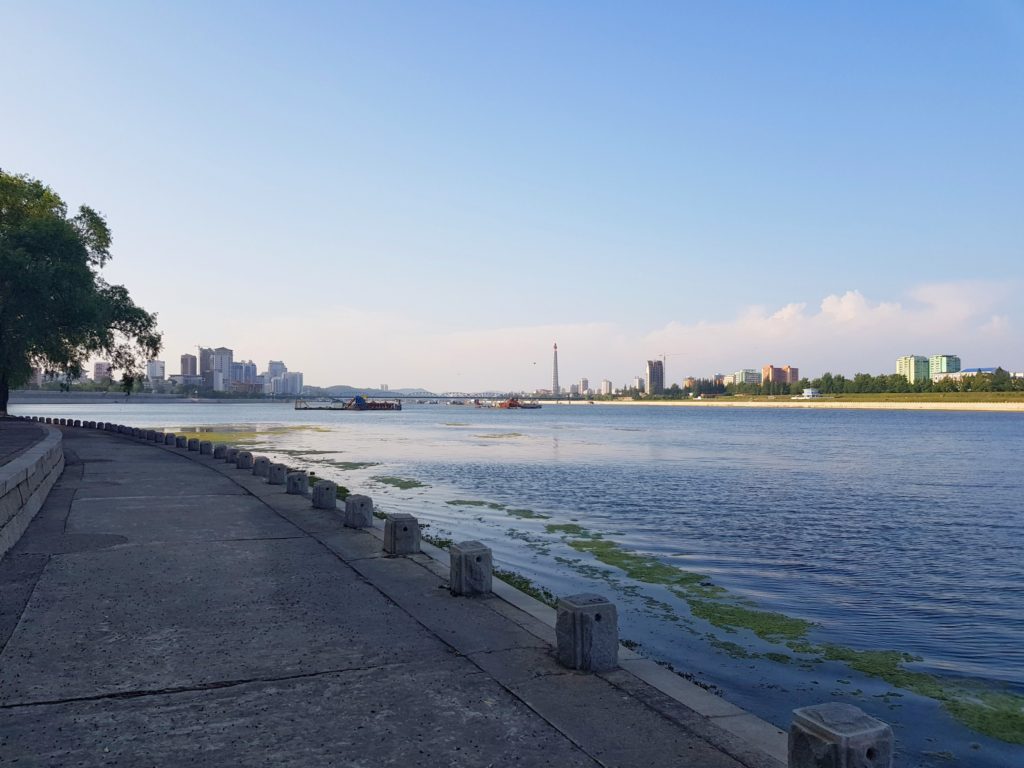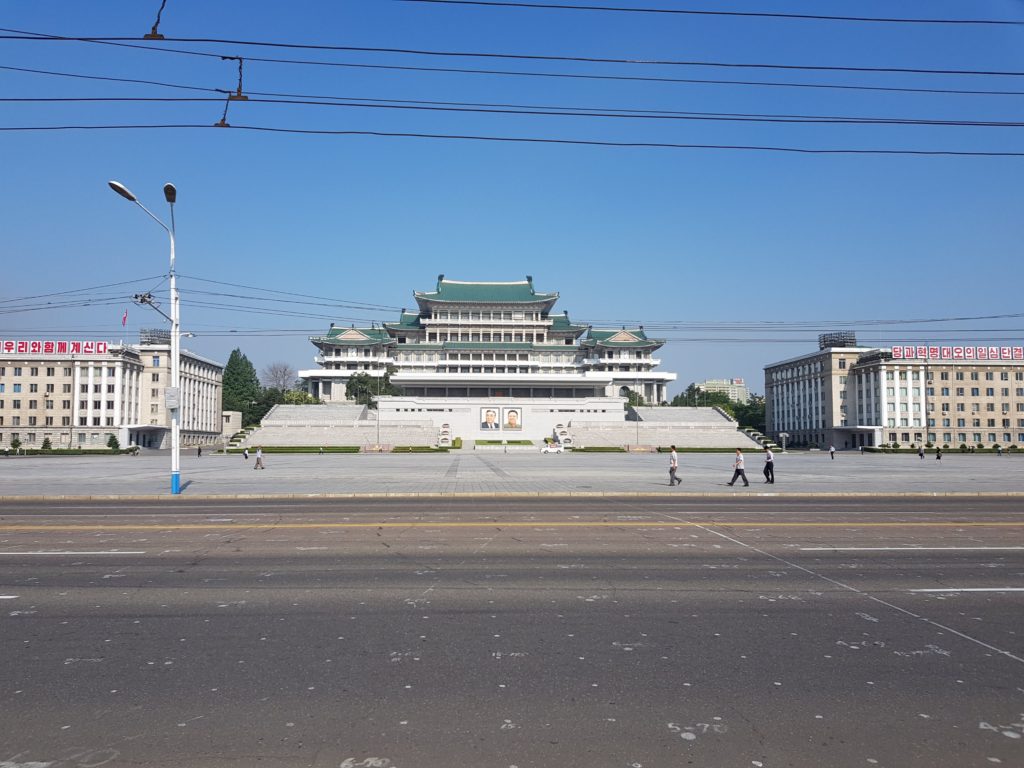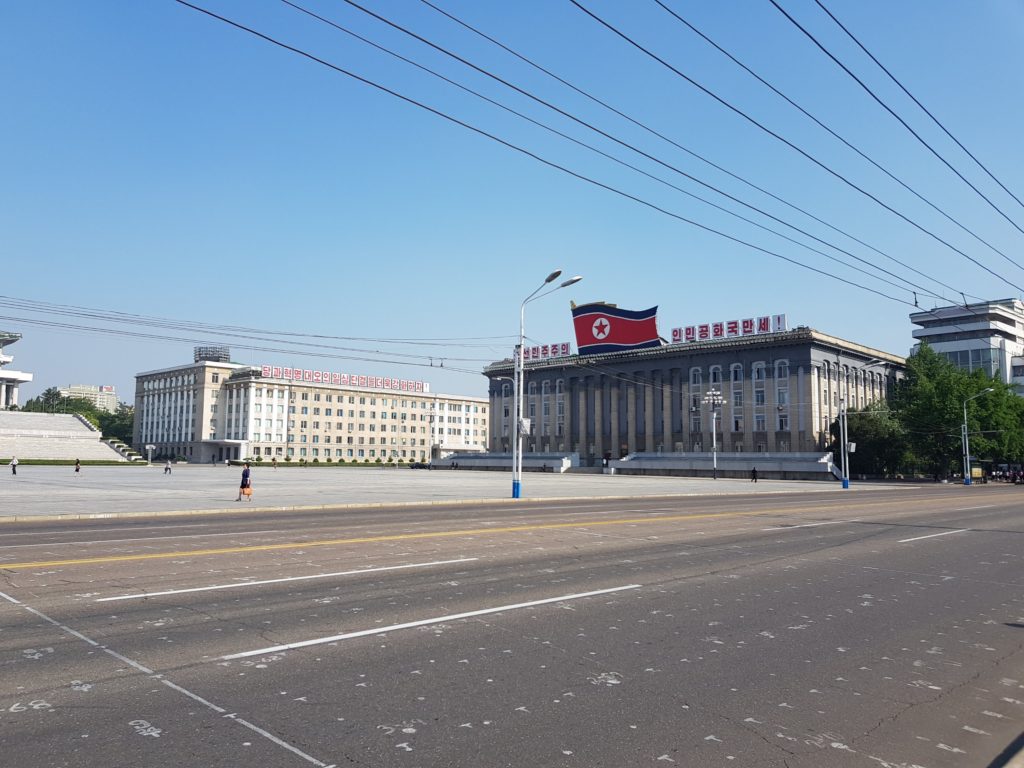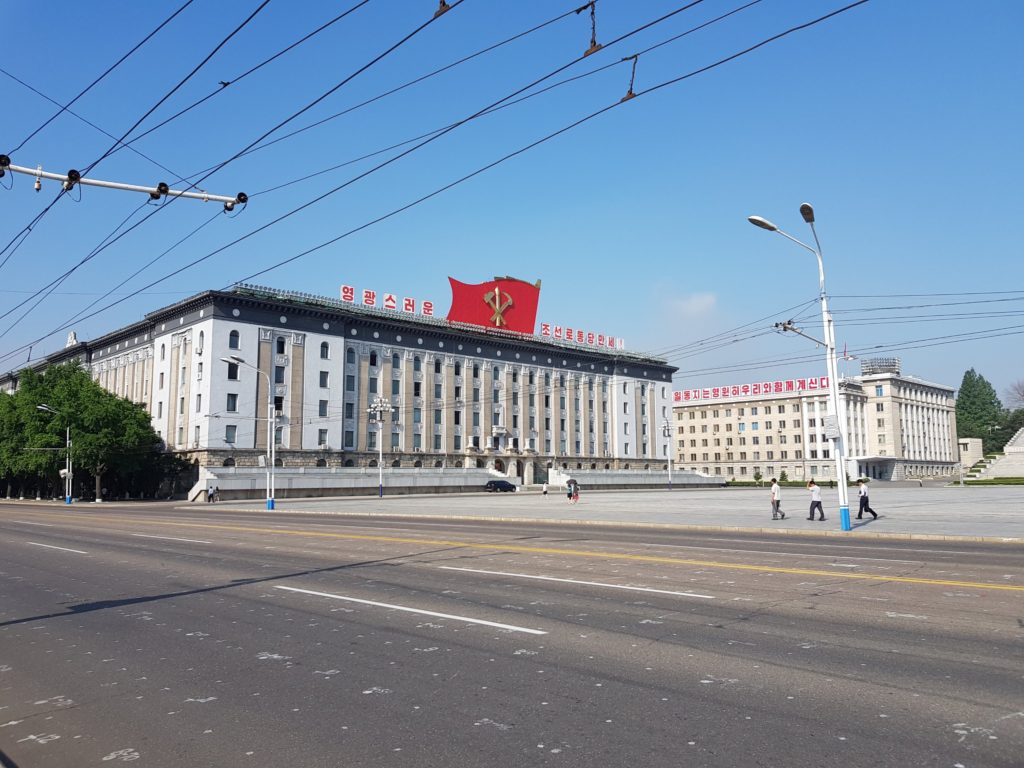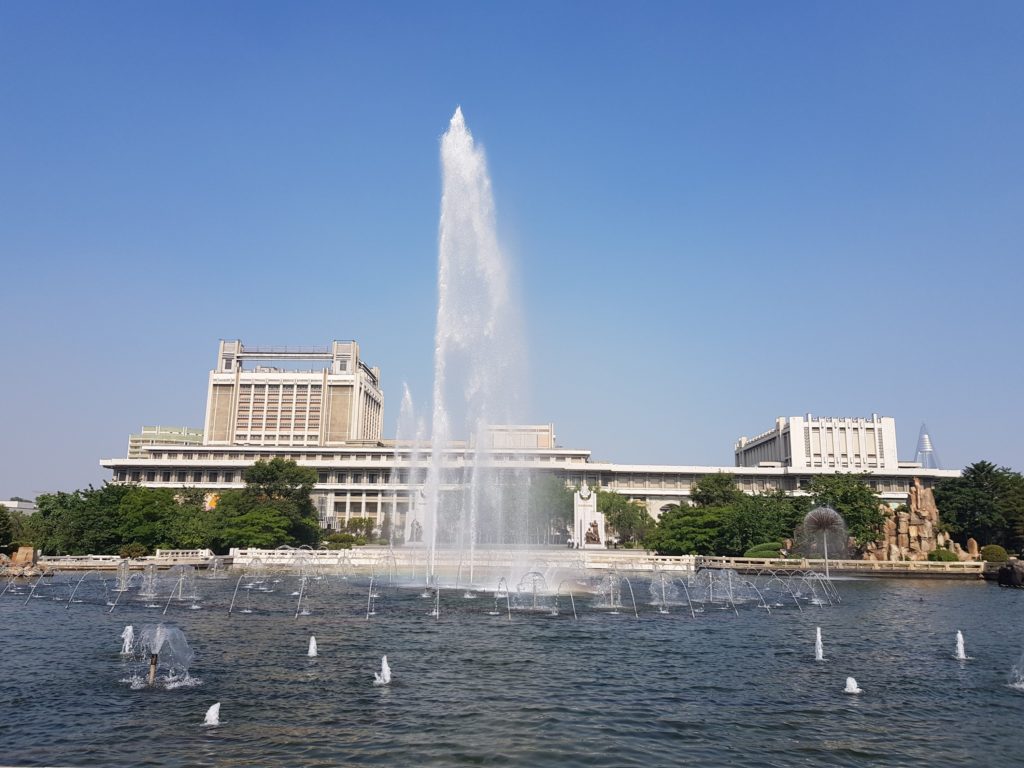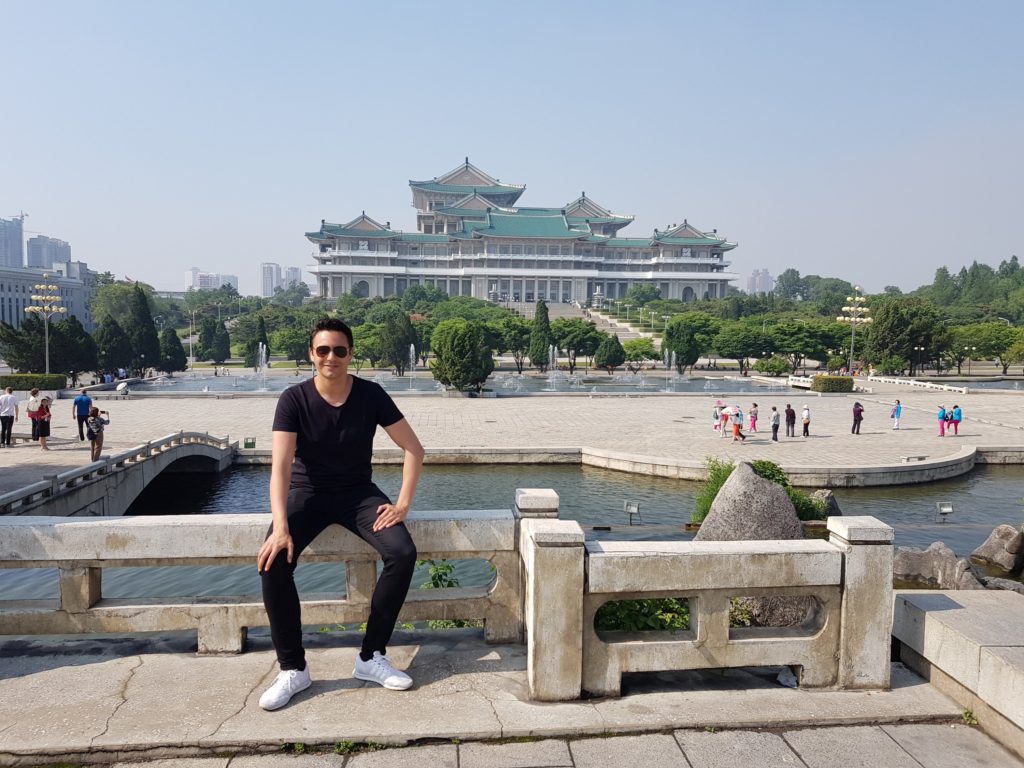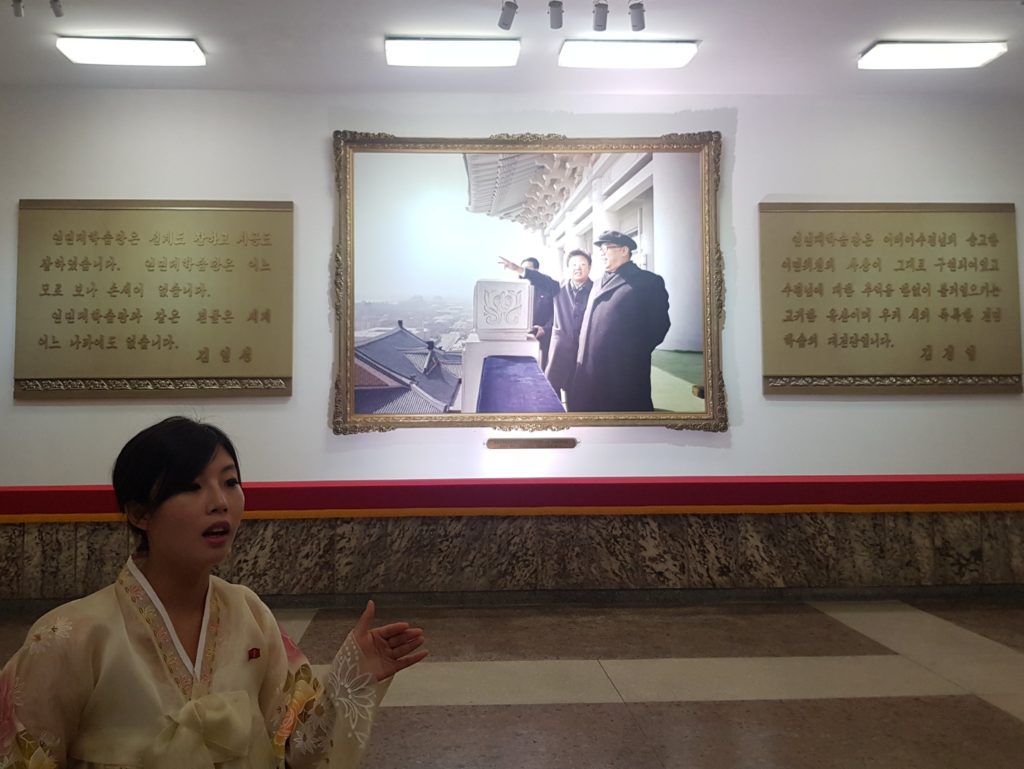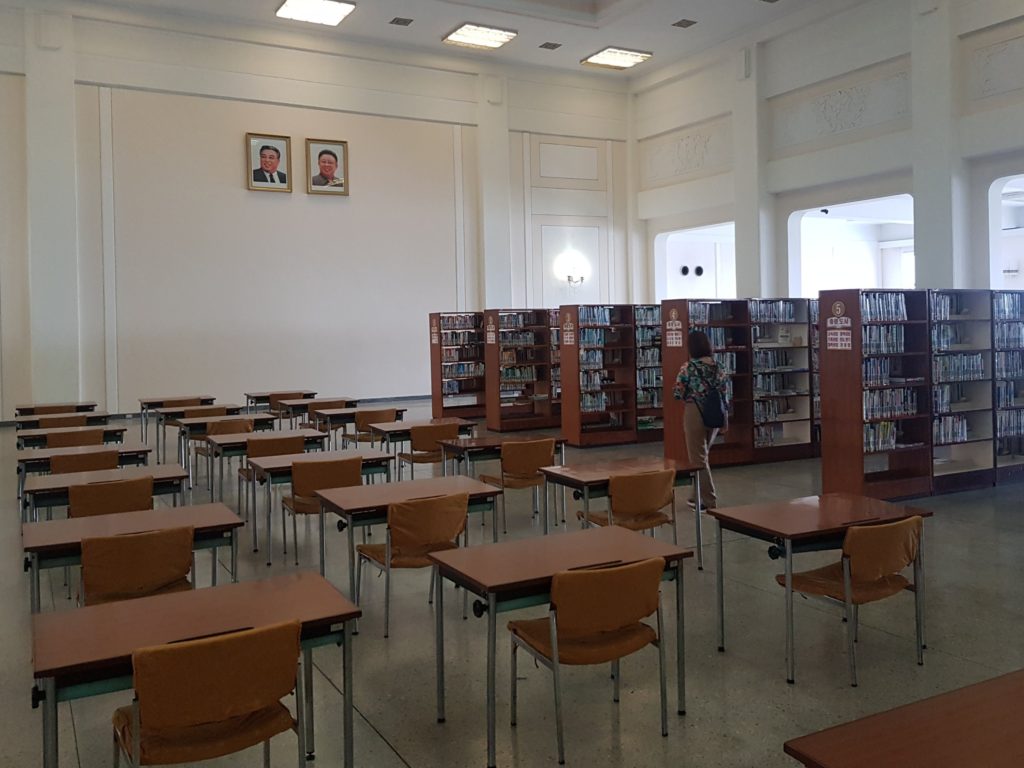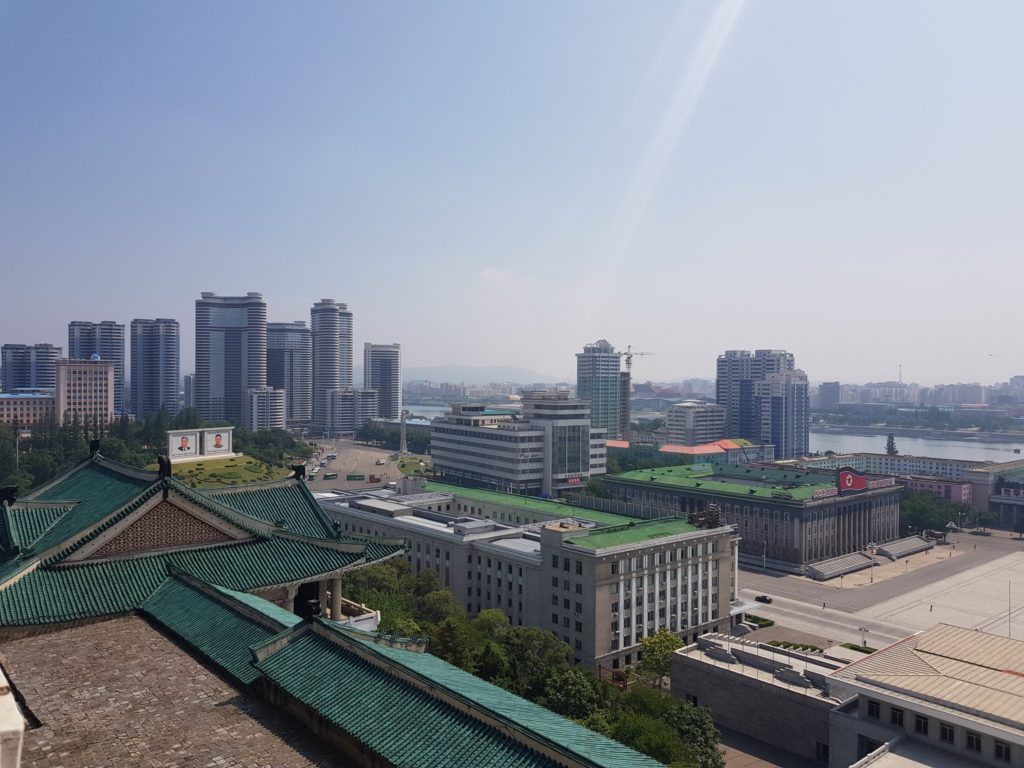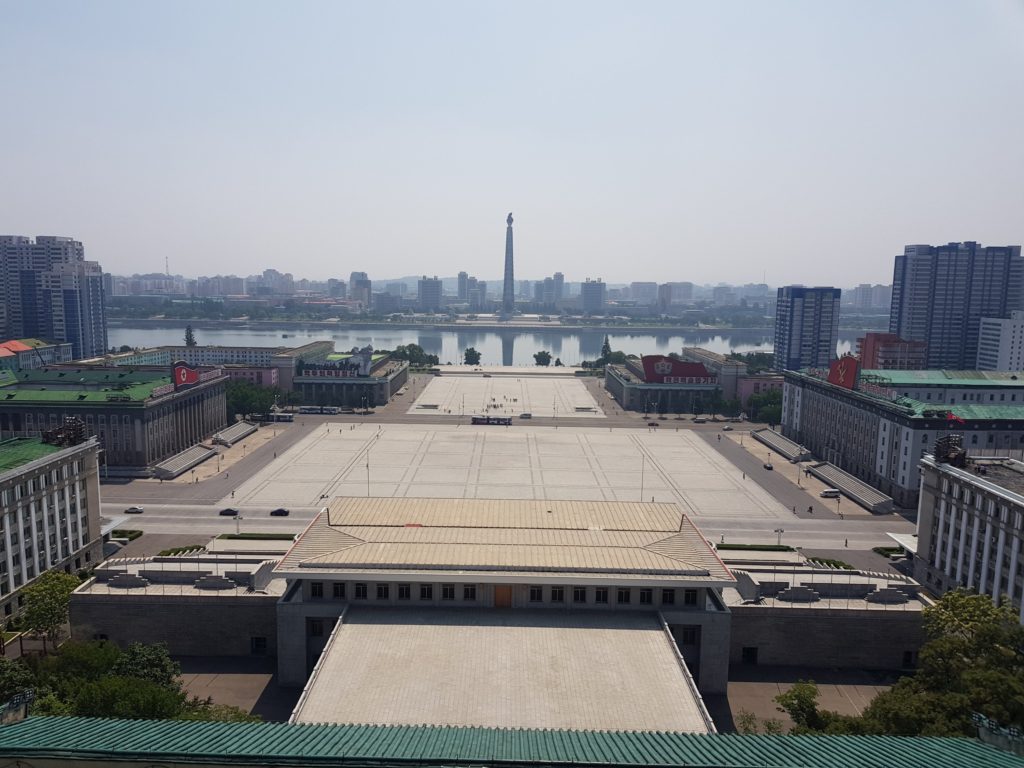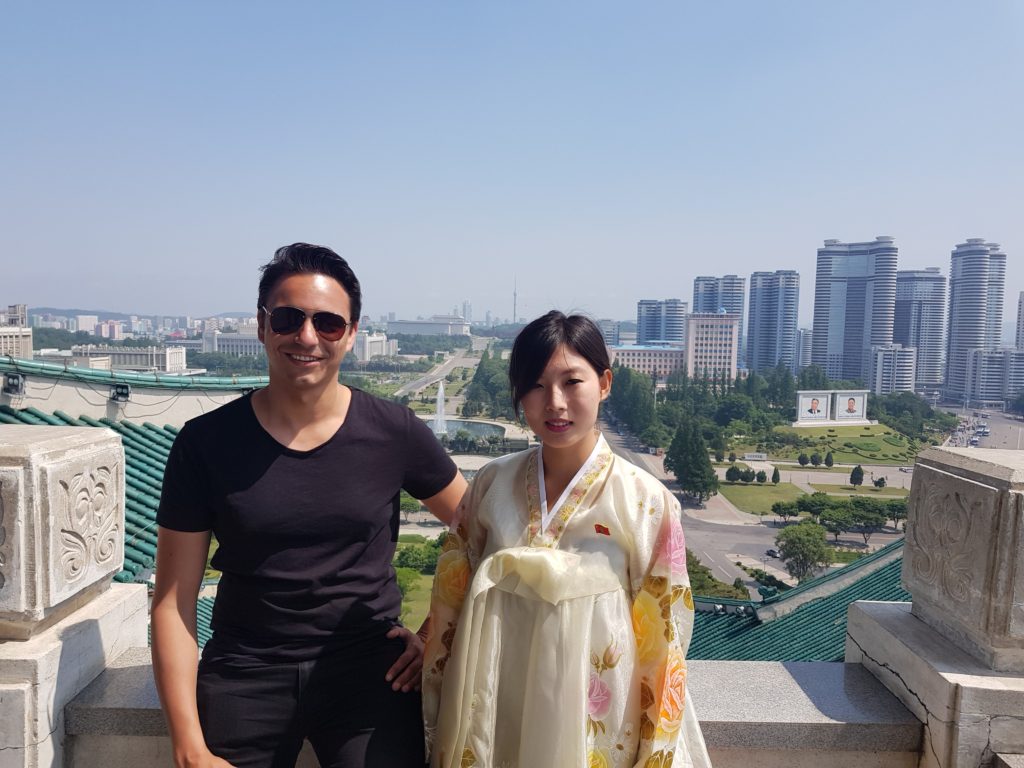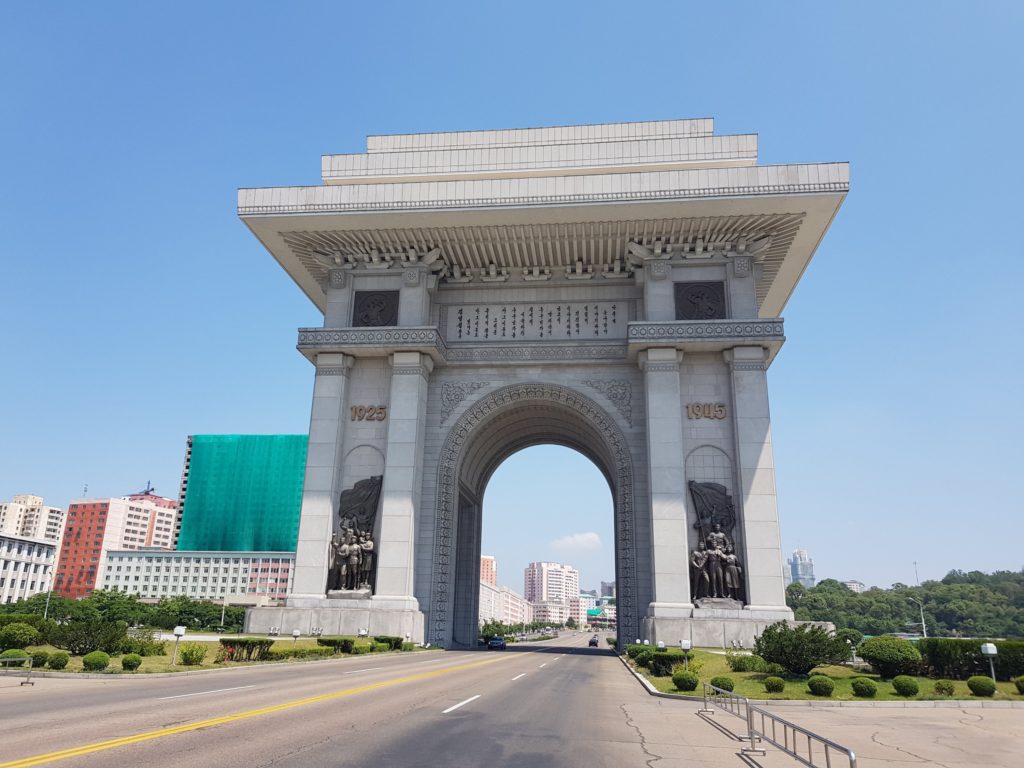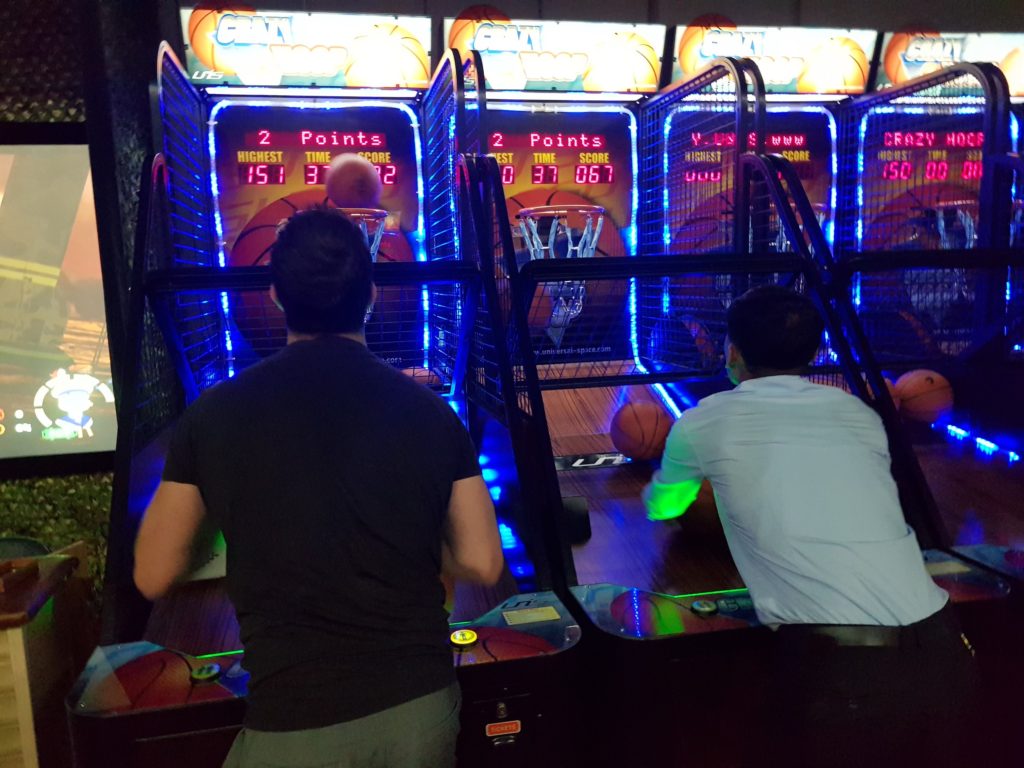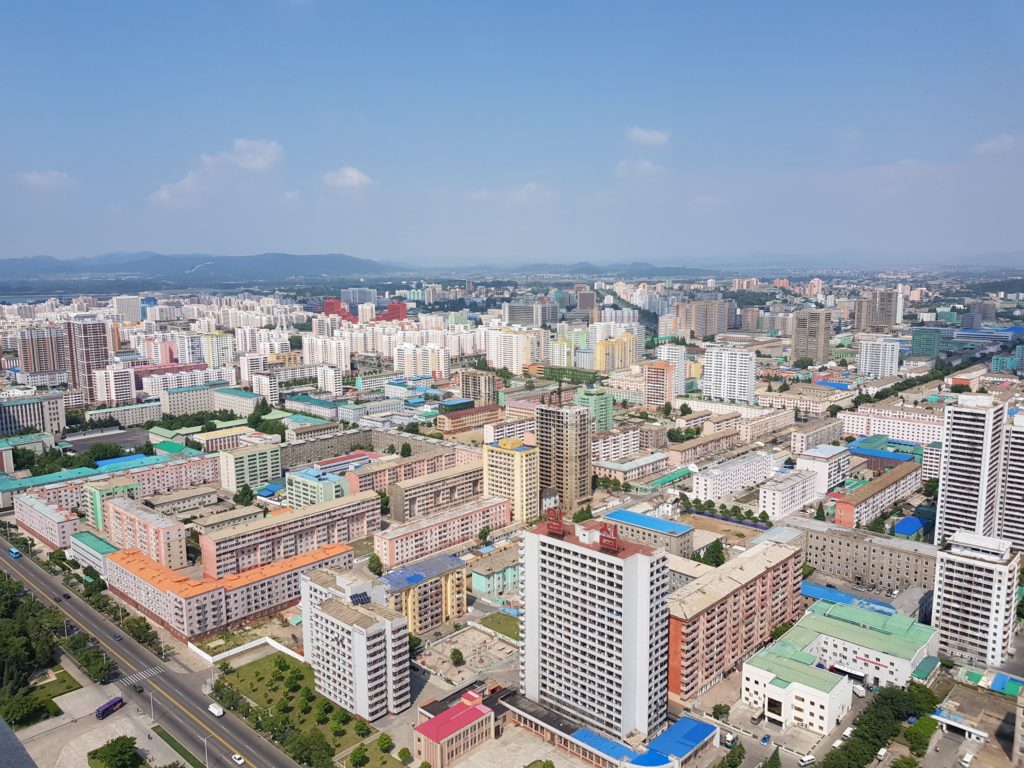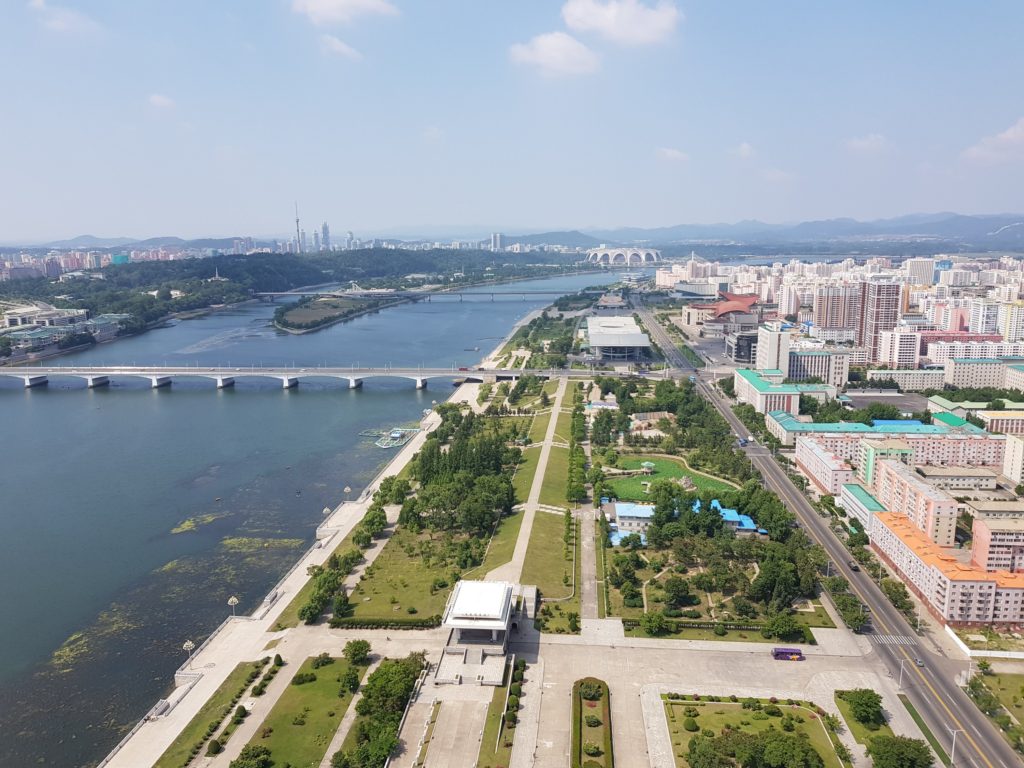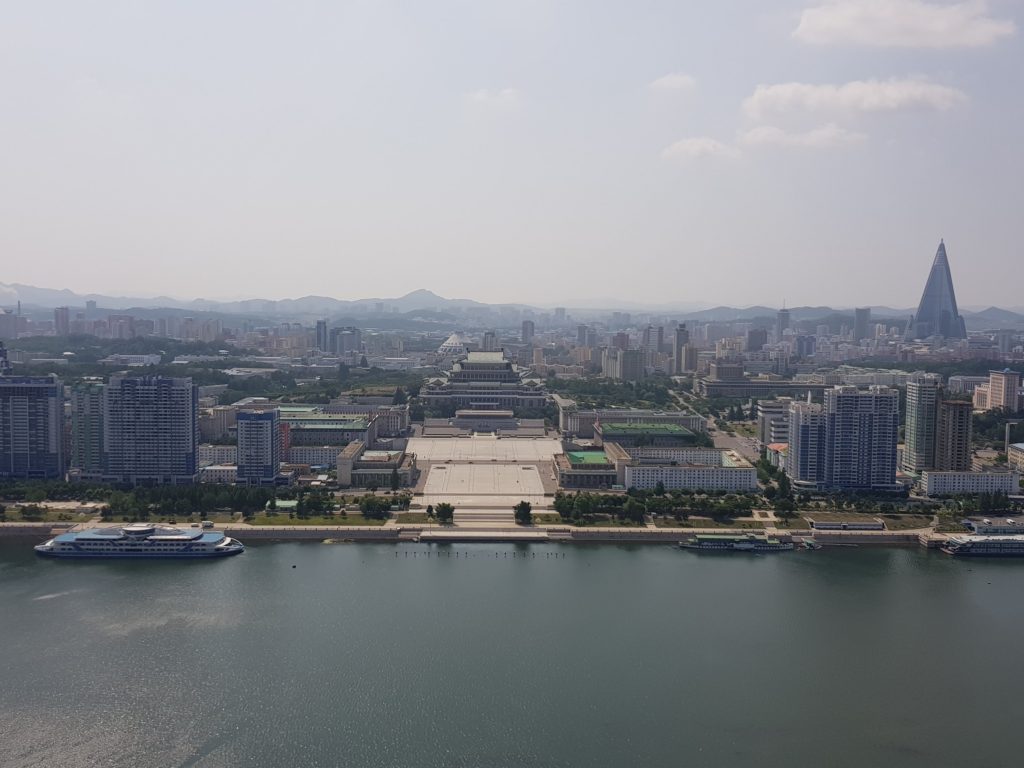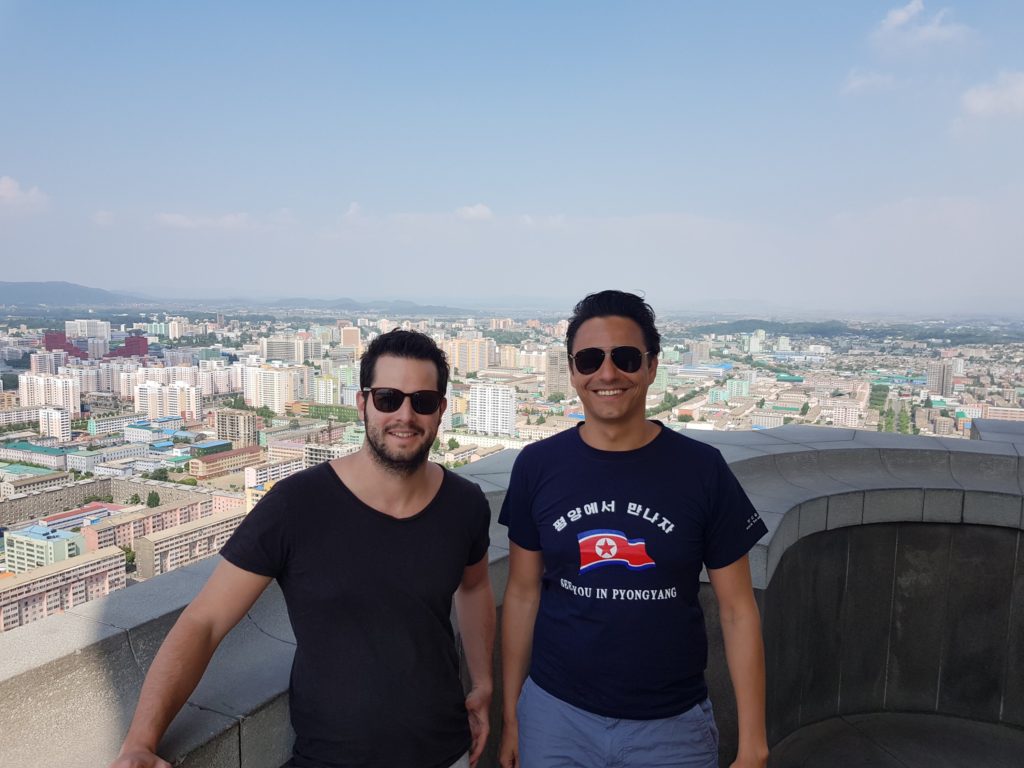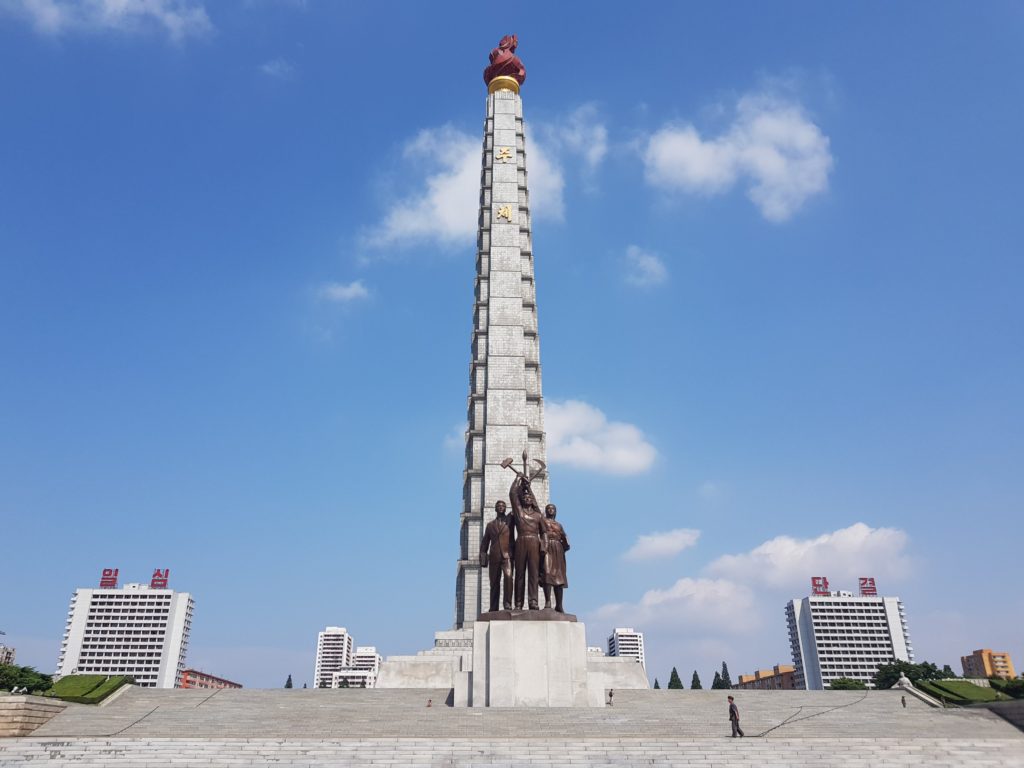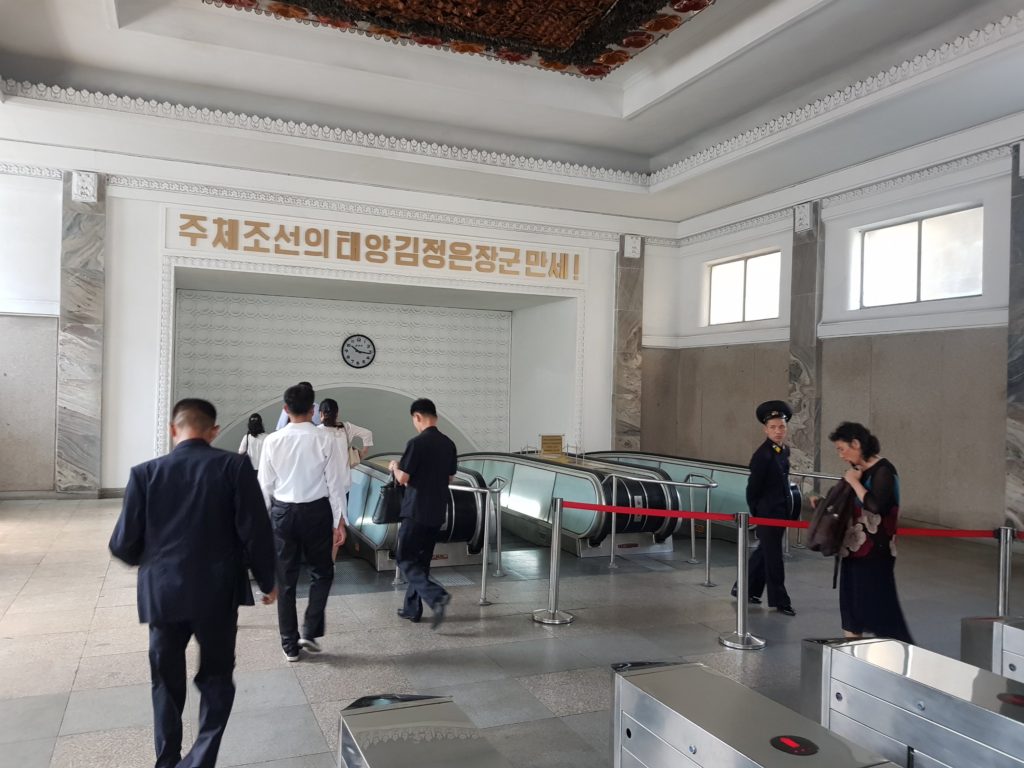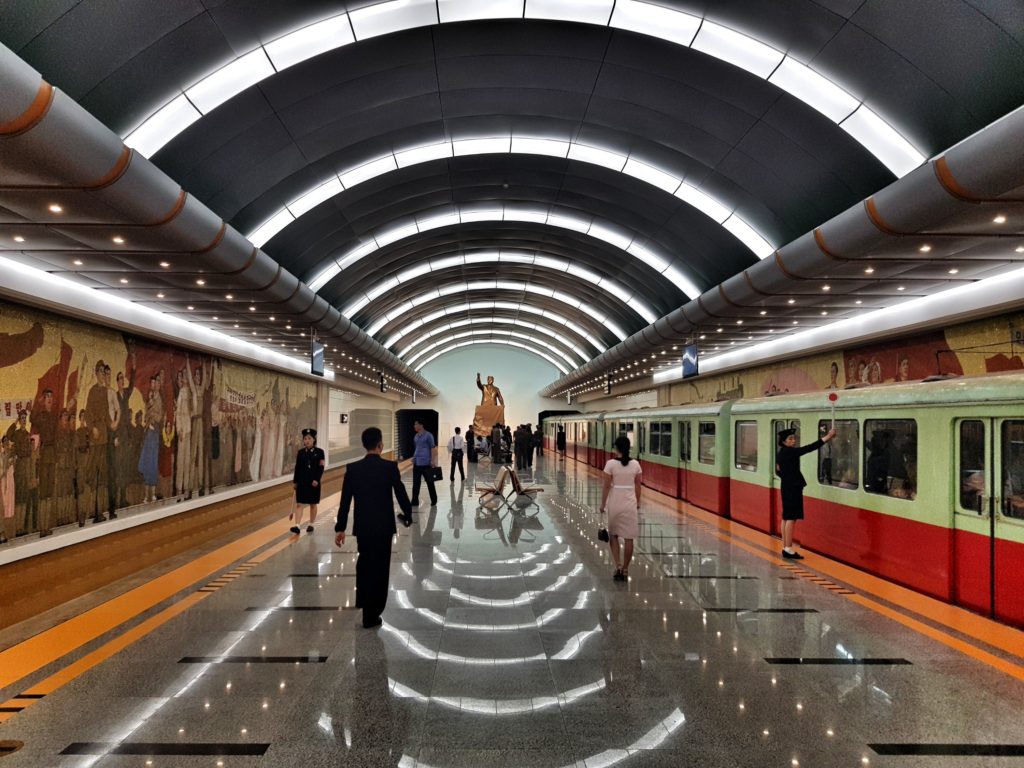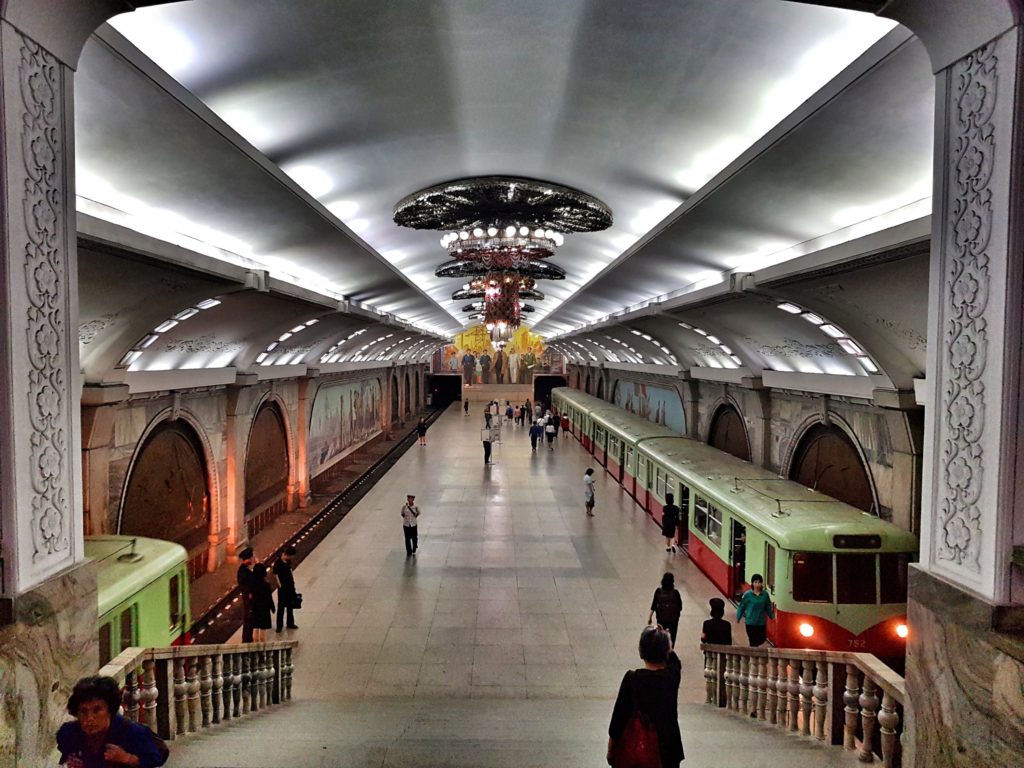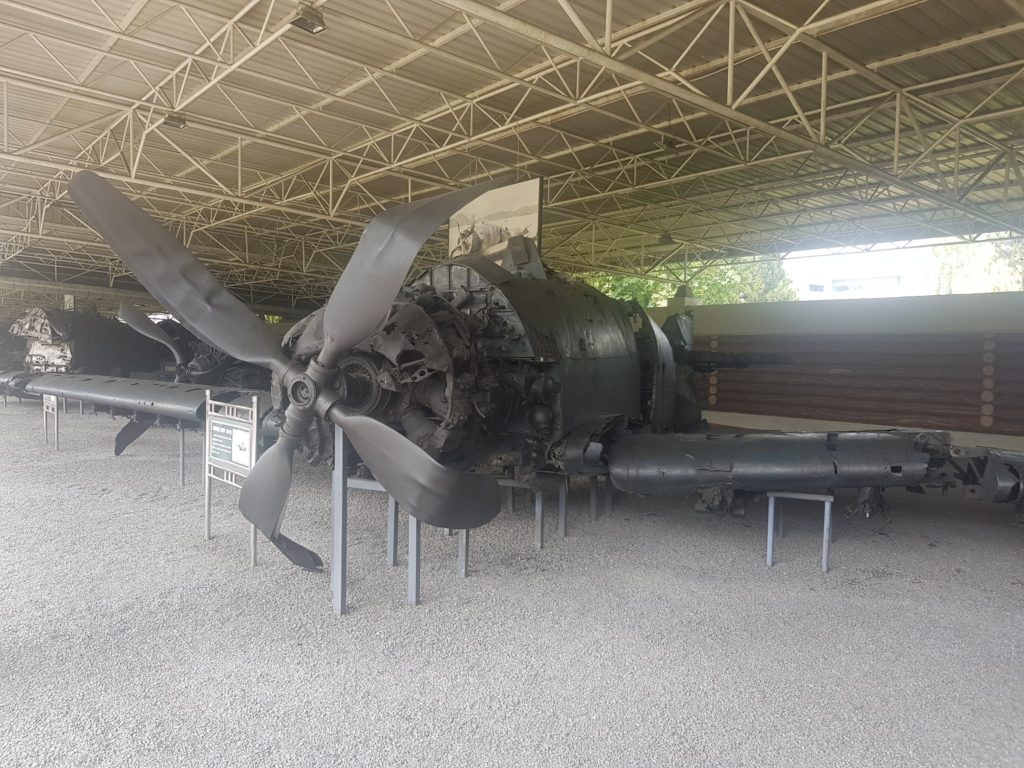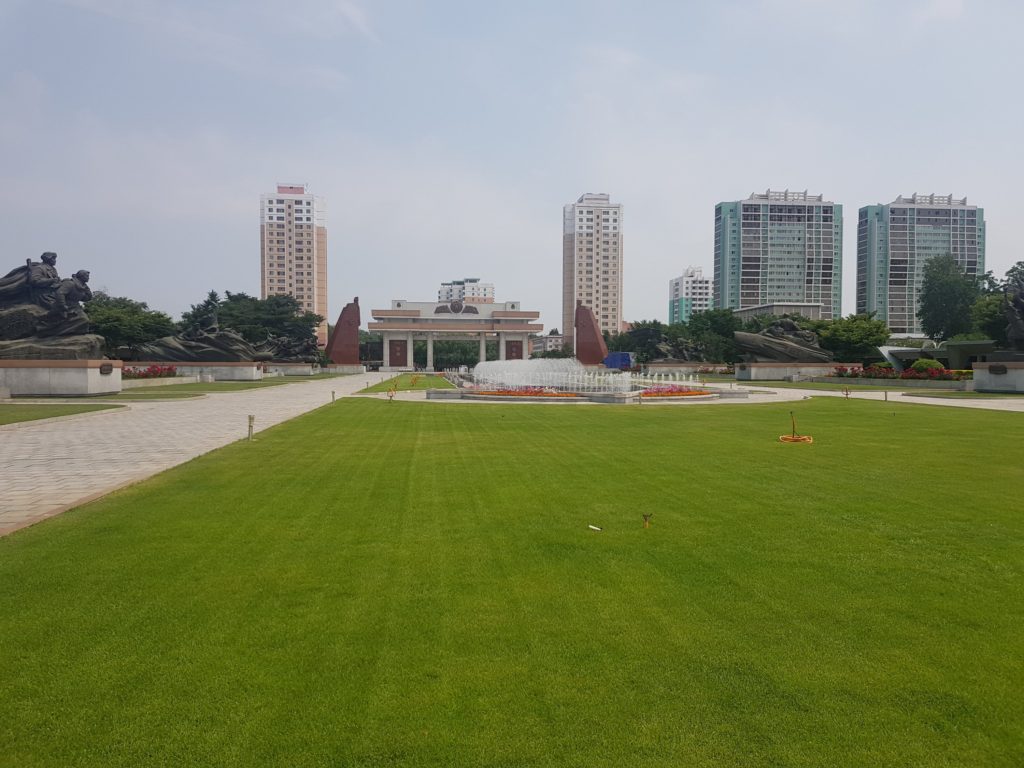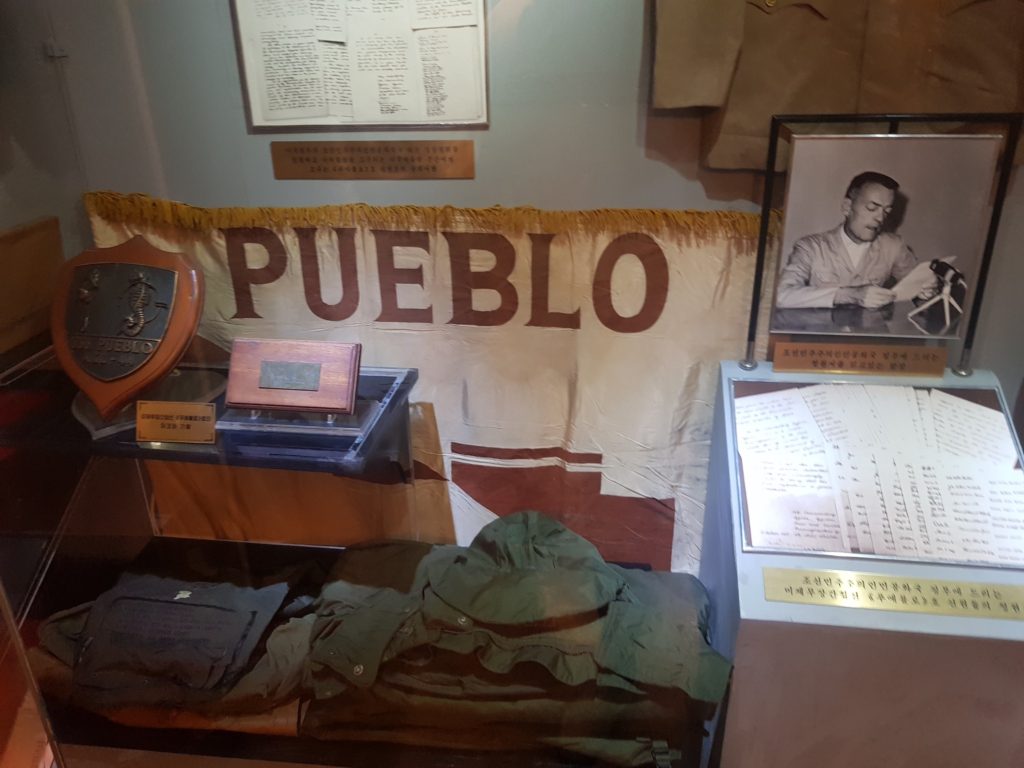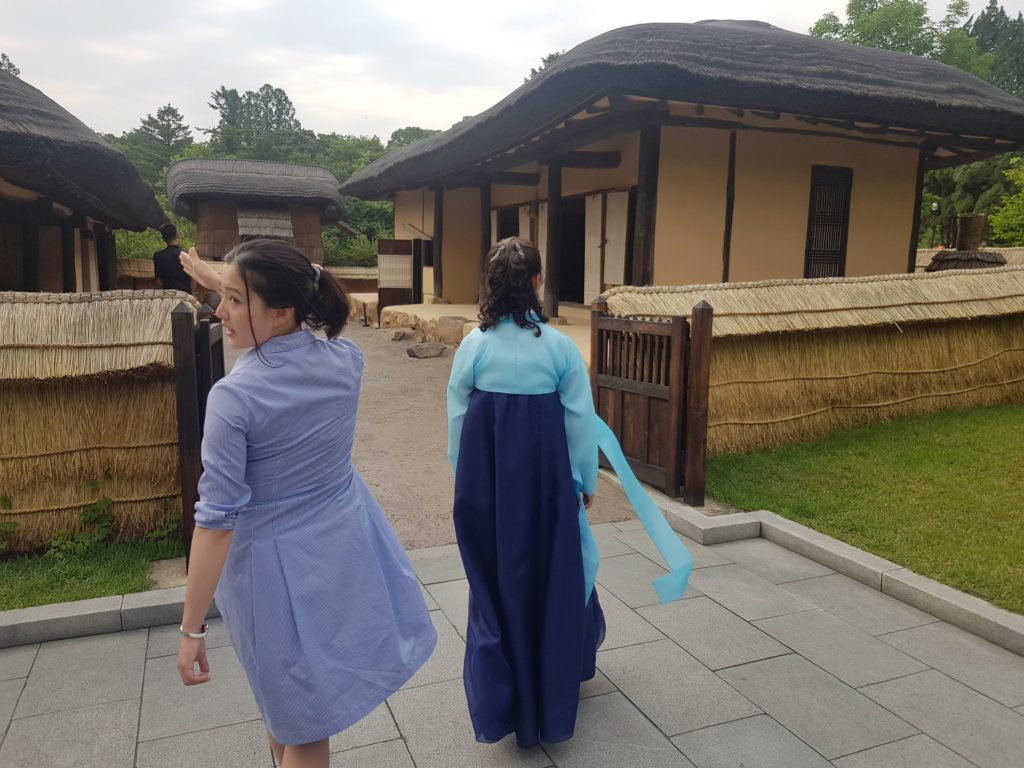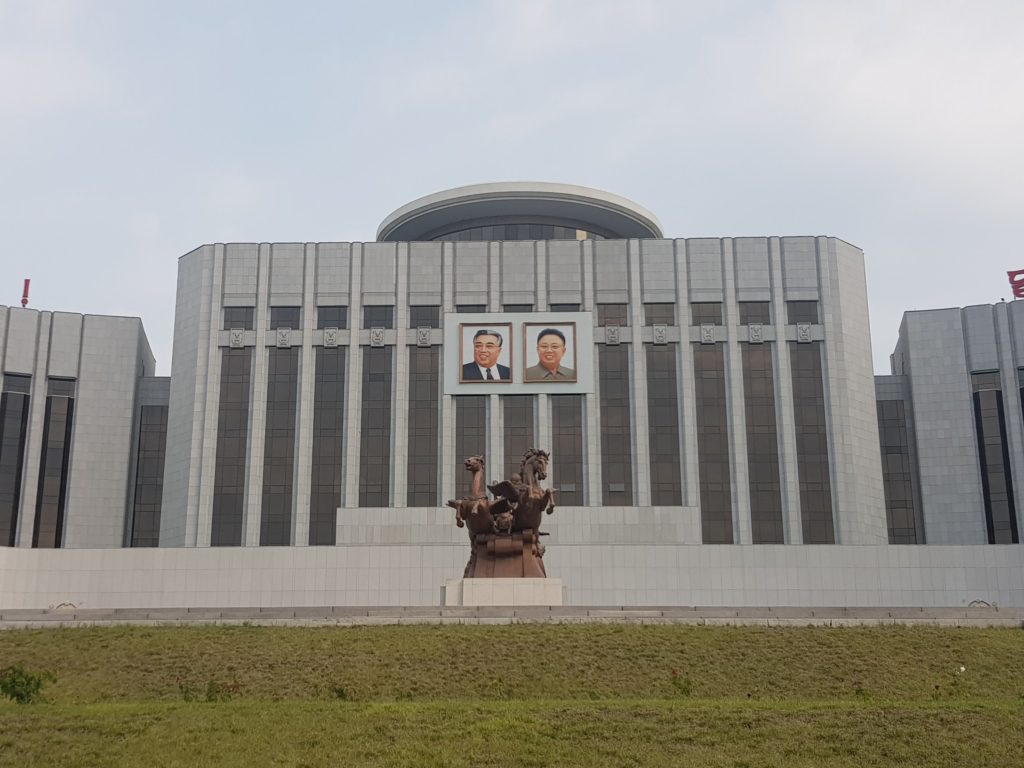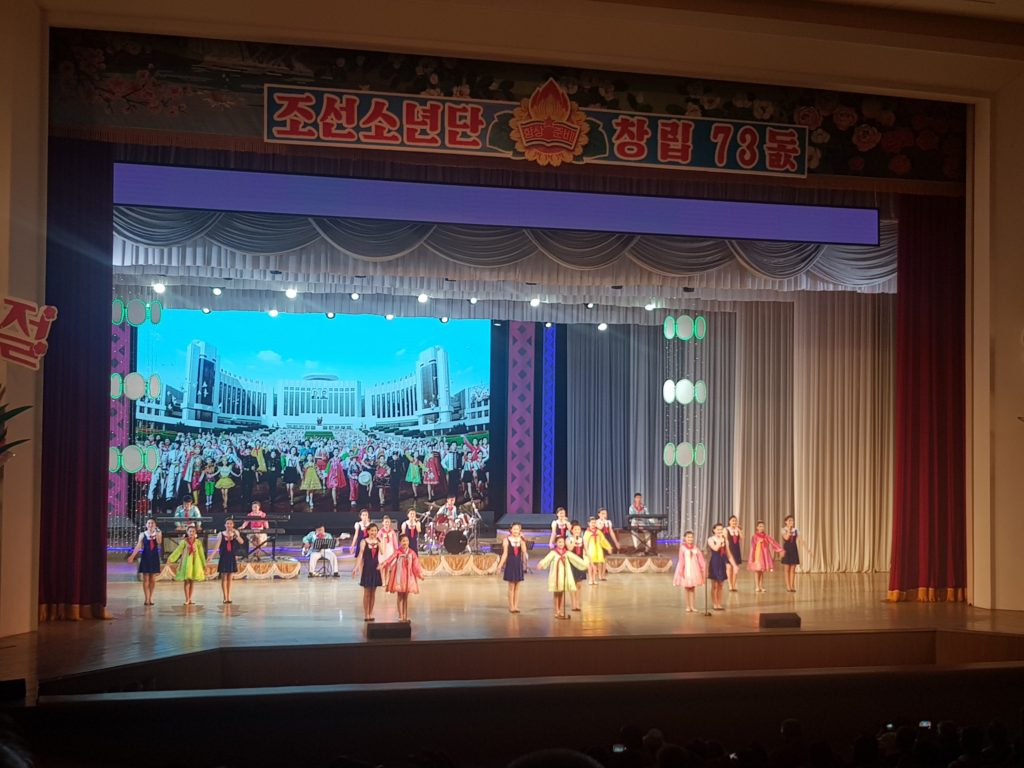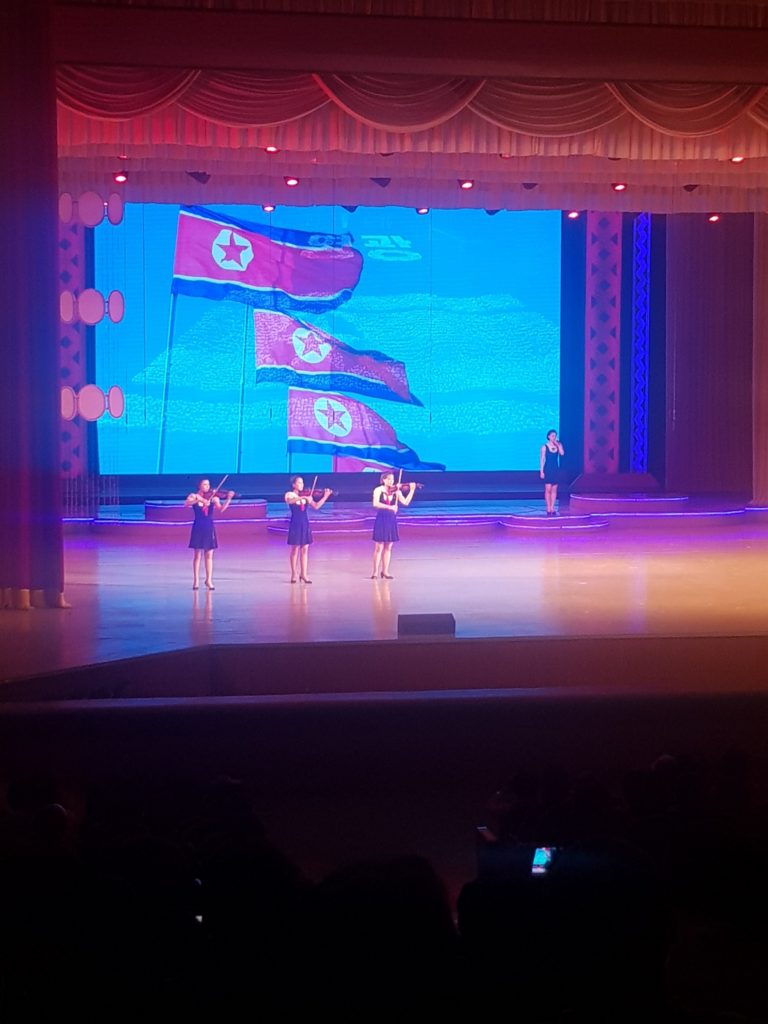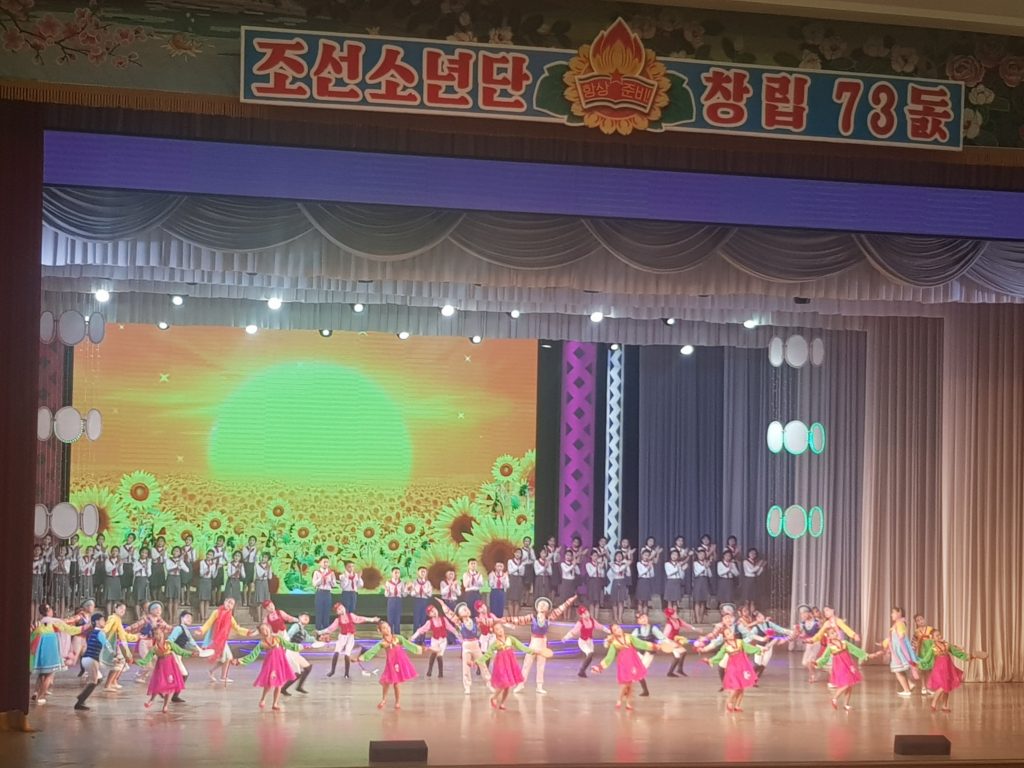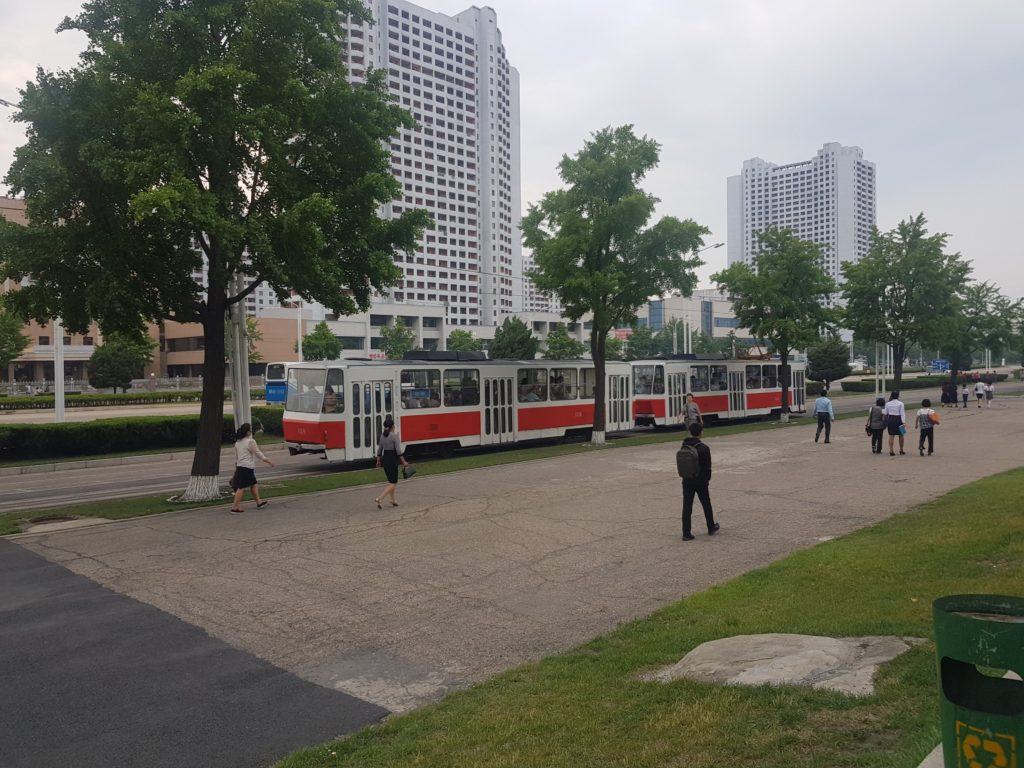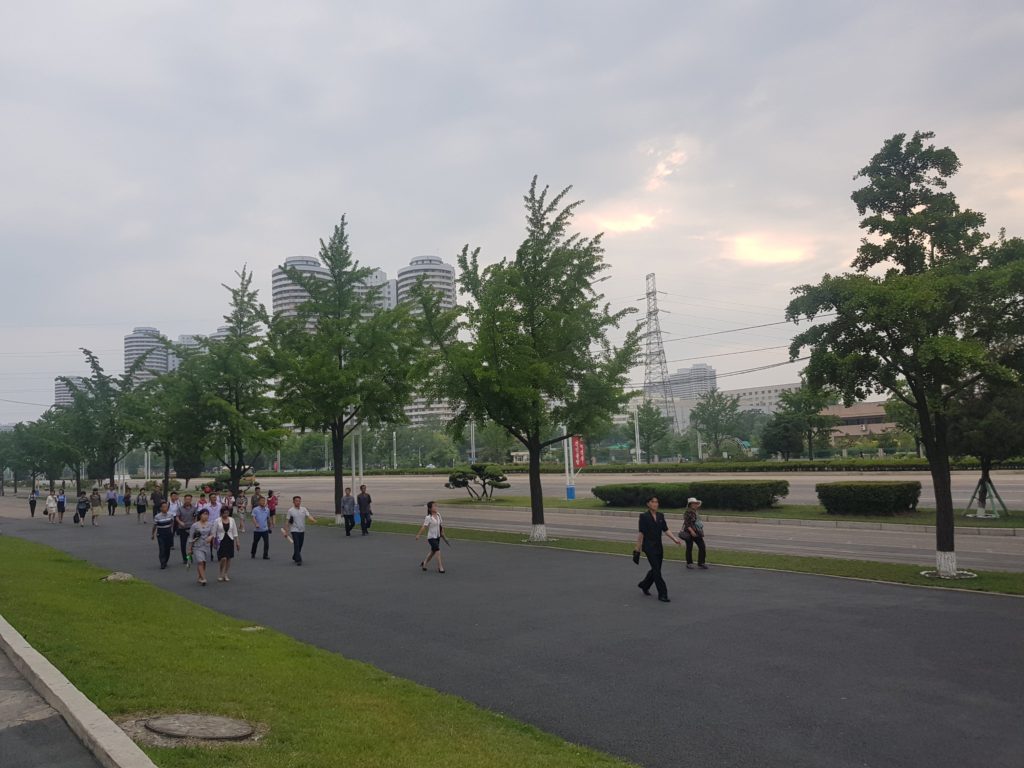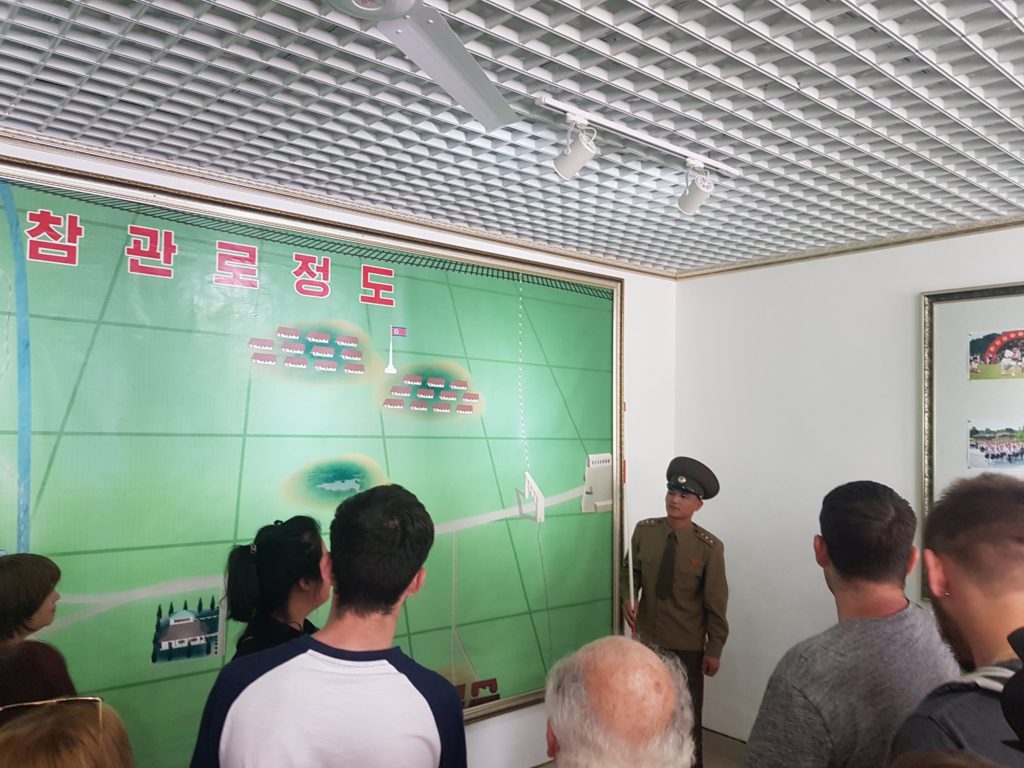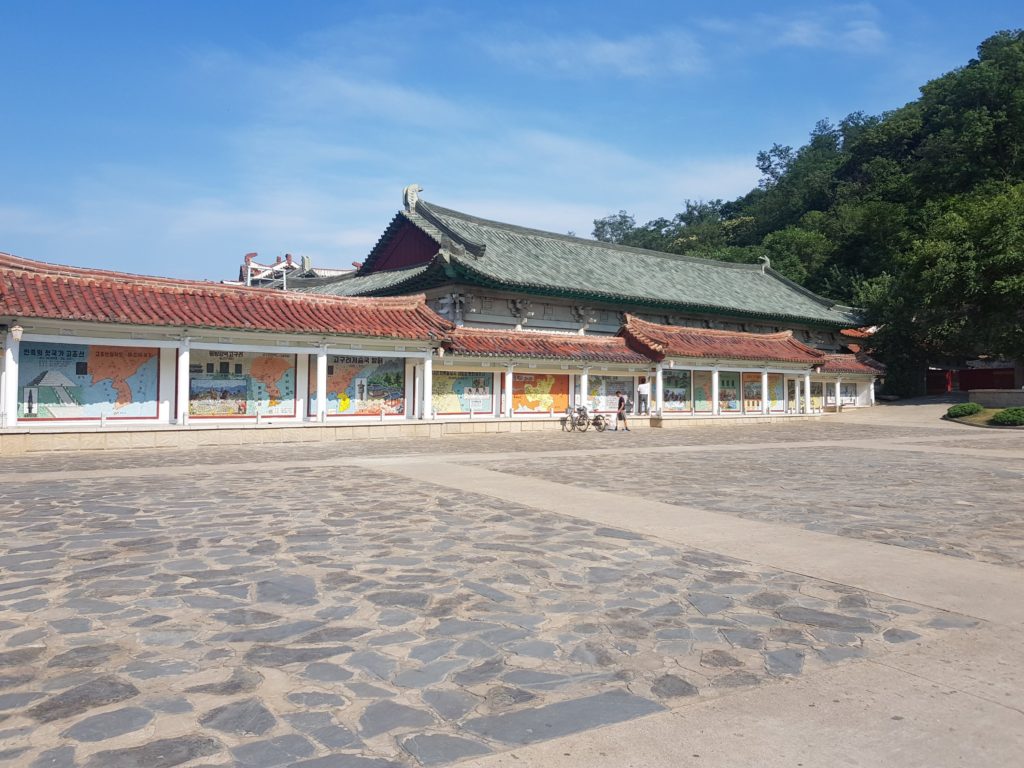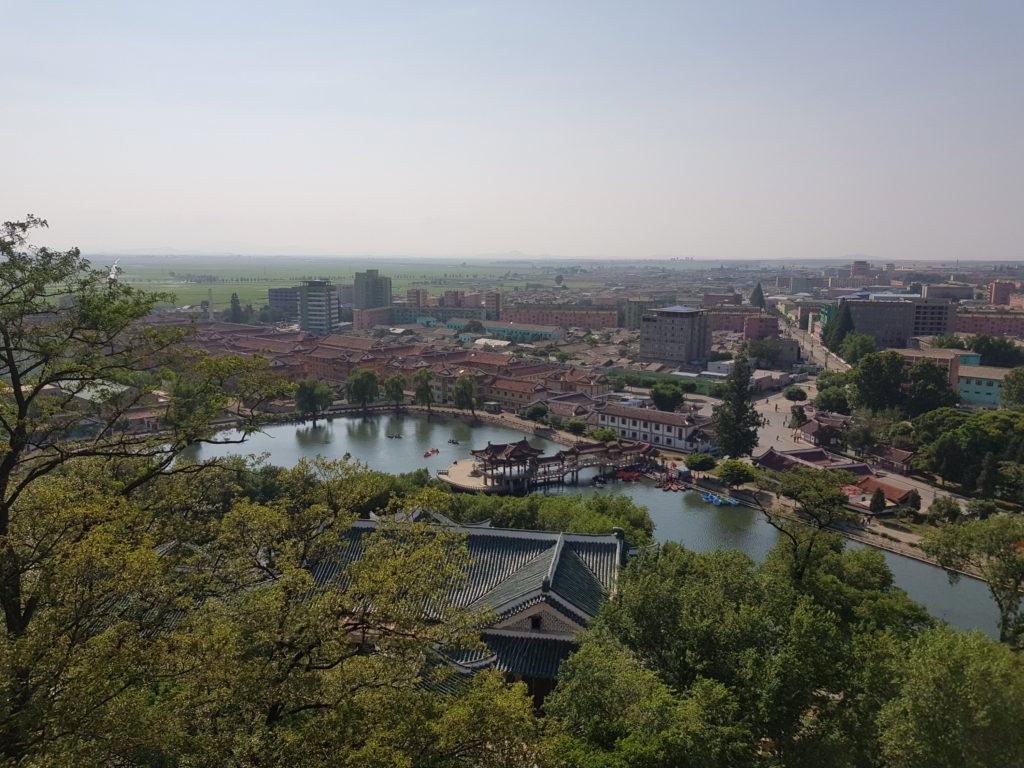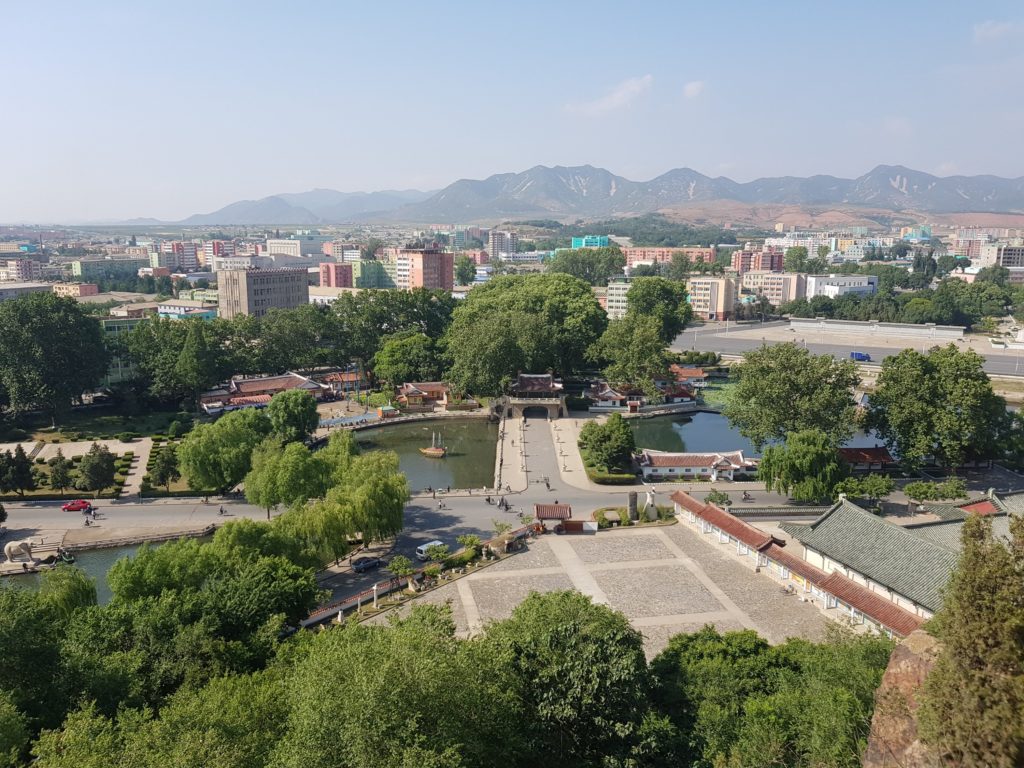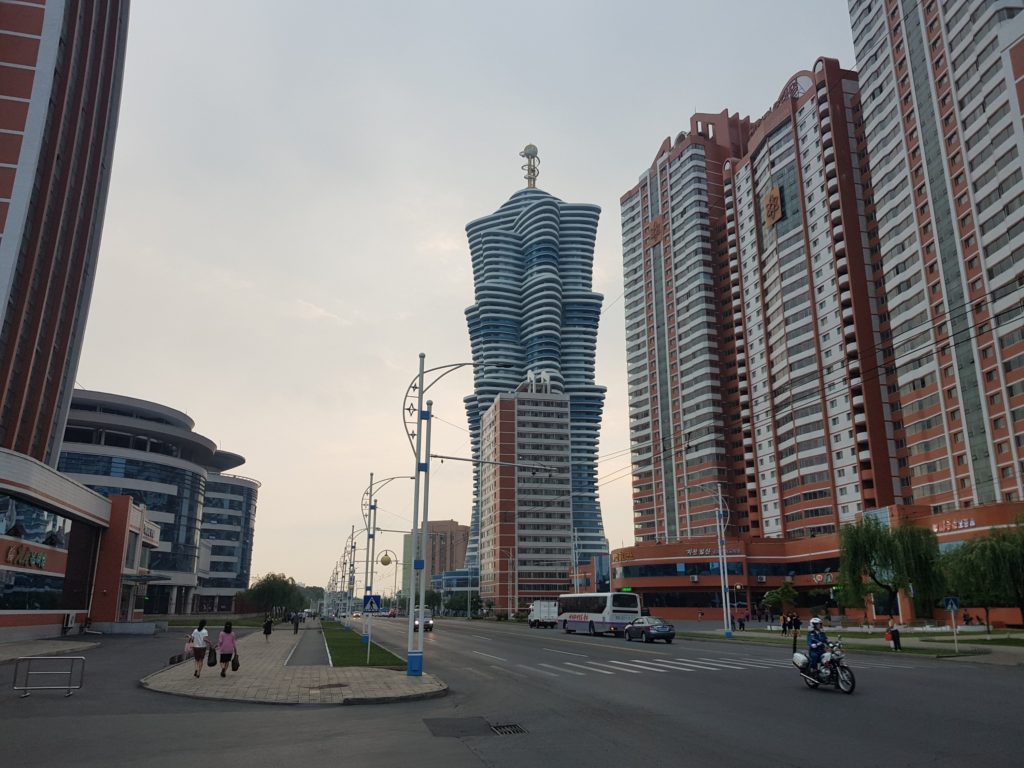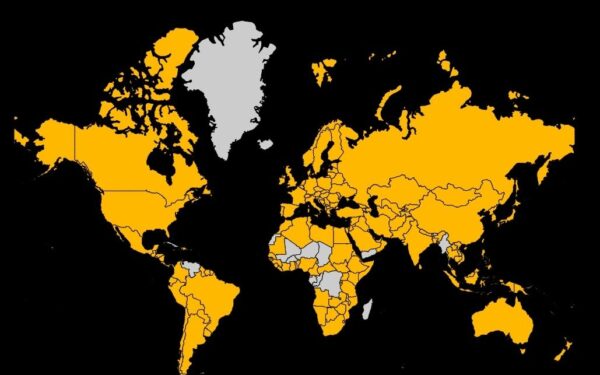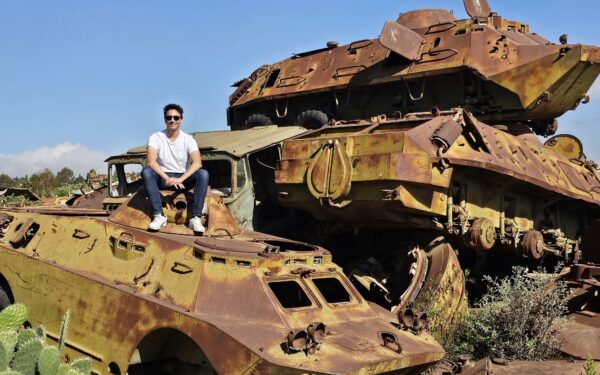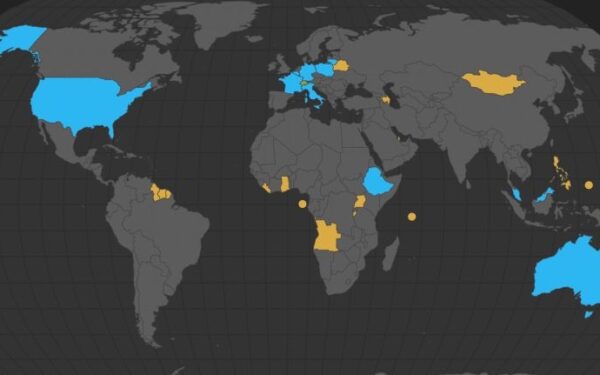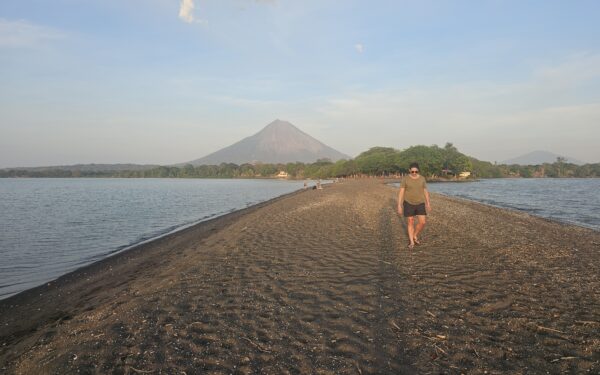Trip report: North Korea
Visited in June 2019
Important notice: due to the fact that North Korea is a very special travel destination, the introduction to this text is relatively long and detailed. The introduction is mainly about what the requirements are for a North Korean trip, how to get a visa, if the country is safe and what my expectations were before the trip. If you don’t want to read this, you can jump to the beginning of the trip report right away by clicking on this link.
After years of waiting, the time had finally come. I would finally travel to North Korea.
North Korea is without a doubt a country that makes most people uncomfortable. The country is completely isolated from the outside world. The 25 million inhabitants live in a dictatorship once founded by Kim Il-sung, then continued by his son Kim Jong-il and meanwhile taken over by his son Kim Jong-un. When it comes to human rights, the country is in the last place on literally every ranking. There is neither freedom of speech nor freedom of press. Those who dare to criticize the government will be punished with labor camps or death.
The country is also the only one in the world that has no internet. Because the government doesn’t want that people read what in the outside world is happening. You can’t leave the country as a North Korean anyway. Anyone who manages to escape has to assume that his entire family will be sent to concentration camps.
Instead of an internet, the country has a gigantic intranet, where the inhabitants can read what the government wants. On this and other media, North Korean propaganda tells the locals that North Korea is the last safe place in a world of chaos. There is also a real personality cult around the great leader of the country, Kim Jong-un, and his father and grandfather. All three have God status in the country. More about this later.
Only a few countries still have diplomatic relations with North Korea, which is more or less isolated in the international community. The big neighbor China seems to be the last ally. However, North Korea now has a nuclear bomb that also makes the USA nervous. After all, the country has made itself unassailable.
“Is it even possible to travel to a country like this?” some might ask. Oh yes, it is. Every year between 4,000 and 6,000 tourists from the western world travel there. In addition, there are about 85,000 Chinese tourists every year. The country therefore has more tourists than one would imagine. With Liechtenstein, Sierra Leone, Guinea and Afghanistan, I have even been to four countries that have fewer tourists than North Korea.
If you wonder why North Korea wants tourists in the country at all, the answer is simple: the North Korean government needs foreign currency! No other country in the world is subject to such harsh sanctions as North Korea. That’s why the North Korean government is happy about every dollar or euro brought into the country.
But there’s a catch: you can’t travel North Korea on your own. Either you travel in a private tour or in a group tour. In both cases you have two North Korean guides with you who follow you every step of the journey. For group tours there is usually also a guide from the western world.
Is North Korea a safe country to travel?
Before I went on this trip, I got all kinds of advice from people who supposedly knew about North Korea because a friend of a friend of a friend told them something about it. According to these people, I was highly crazy to travel to North Korea.
To make one thing clear: North Korea is safe! I even go so far as to call it one of the safest travel countries in the world. As I have already written in my report about Turkmenistan, a country not so different from North Korea, ultra-strong dictatorships often lead to zero crime. The punishment is so high that no one dares commit a crime. Not even a small one.
Perhaps one or the other is now thinking of the American student who was arrested in North Korea and brought back to the USA after a few months with severe brain injuries, where he eventually died. Otto Warmbier was his name. Warmbier has been guilty of a crime in North Korea. He stole a propaganda poster from the hotel and tried to smuggle it out of the country.
We do not have to discuss the reasonableness of his punishment. North Korean prisons or labor camps are probably the most inhumane place in the world. Nevertheless, he has broken a rule. It was a prank, but he should have known what the consequences could be. I don’t want to justify anything or downplay his punishment here, but there are a few small but very important rules to follow as a tourist.
The rules are: no disrespect to the leaders, no walking around without the presence of the North Korean tour guides, no stealing, no possession of religious books like the Bible and no photographing of military and constructions (because there are often soldiers working there). These rules are very simple. You follow them and have zero problems.
What certainly did not benefit Otto Warmbier was his US passport. Behind his arrest was also a political motivation, since the USA is the arch-enemy of North Korea. I also read about a Japanese man, who was “convicted and arrested as a spy” in North Korea. Japan is another enemy of North Korea. With tourists from other nations one would probably not have taken such a measure even because of the stolen poster.
Nevertheless, it is not worth challenging your luck in North Korea. You are constantly observed anyway. If not by the tour guides, who follow you every step, then by video cameras, e.g. in the hotel. But once again: if you follow the rules, North Korea is a very safe destination.
How did I get the visa?
Getting a visa for North Korea is actually quite straightforward.
As I already mentioned, it is not possible to travel to North Korea on your own. It is the only country in the world where you are accompanied by two tour guides all the time. There are two other countries that can only be visited with a guide. However, Turkmenistan has partially withdrew this rule, and in the other country, Bhutan, you have guides, but they let you explore villages etc. alone.
Since you cannot travel through North Korea independently, tour operators such as Young Pioneer Tours, Koryo Group, Lupine Travel etc. take care of the organization for you. They will also take care of your visa, which you will receive 2-3 days before your departure in Beijing.
We also had a short briefing with the people from Young Pioneer Tours during the visa handover. They explained the rules to us again and pointed out that we should not provoke the guides with unpleasant questions. For example, we should not ask where all the concentration camps are or whether it is true that prisoners are fed alive to hungry dogs. The guides would not appreciate such questions.
A matter of course for us, but obviously there are also tourists who see things differently.
What I expected to see in North Korea
Of course, everyone has some image of North Korea in mind. And often this image is the same. In my imagination, North Korea was the saddest place on earth. A country that is a huge prison camp, dreary and with little joy. On the one hand, this image developed through media coverage about North Korea. On the other hand, there are two people in my circle of friends who have already been to North Korea. One of them was there about a year before me. His tour provider was also Young Pioneer Tours, but unlike us it was a group tour.
I listened to his story with great interest. He told me that the tour guides were extremely strict. So at the beginning they were told friendly but very determined that they shouldn’t do anything stupid, otherwise there would be a problem. He told me that they were always escorted by their tour guides into the hotel room and were not allowed to leave the room at night. They also had to stand in line in front of their room every morning at 8 AM, where they were picked up by their guides.
According to his stories, it was strictly forbidden to talk to locals and one was only allowed to photograph what the tour guides allowed. So statues or other monuments, but nothing of the city, no streetlife and certainly no locals. He also said that the people there were as skinny as in Ethiopia. Both people, who were in North Korea before, also said that the tour guides simply ignore critical questions. They would just look away as if they hadn’t heard the question.
This story actually fitted quite well to the media coverage. A few months before the trip I saw three to four North Korean documentaries on German television. In one of them one saw heated discussions between the tourists and the guides about North Korean politics. There were also some scenes taken with a hidden camera by the tourists. More about the hidden camera at the end of this article. I have often heard that certain things, such as the behavior of pedestrians, are staged in front of tourists. That’s why you never know what is real and what is fake.
So I thought I knew pretty well what to expect in North Korea. All the more amazing was what I had actually experienced in the Democratic People’s Republic of Korea, the official name of North Korea.
Traveling with the worst airline in the world
Air Koryo was the airline that flew us from Beijing to Pyongyang. It is the North Korean state airline and has the reputation of being the worst airline in the world. On the Skytrax website, where airlines and airports are rated, it has long been the only airline with a 1-star rating. Meanwhile, the airline is no longer on the site.
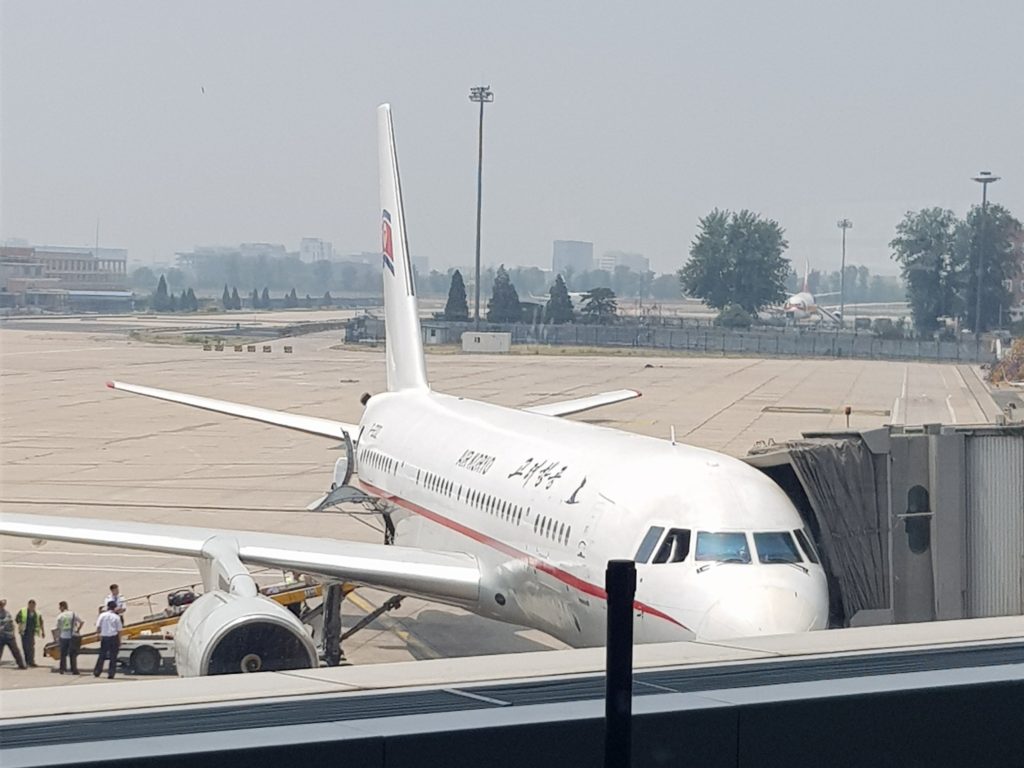
It is forbidden to photograph or film in the plane. In terms of comfort, the airline was no worse than easyJet and even better than Wizz Air or Ryanair. The food, a burger-like sandwich, looked disgusting though and I didn’t eat it. Some kind of entertainment was also provided. On some screens there was a propaganda movie accompanied by patriotic music.
What interested me the most were the other passengers on this flight. The more special the destination, the more lonely you are among all the locals on the plane. But that was not the case here, because there were a lot of passengers from the western world. In our row all passengers were from Europe. Was it a coincidence or was it an intention to separate Koreans from non-Koreans? Probably. The flight was nevertheless quite unspectacular.
Conclusion: Air Koryo is not a good airline, but definitely not the worst I have ever traveled with.
The airport in Pyongyang wasn’t as bad as I would have expected either. It was certainly better than most of the African airports I flew from and also better than some Eastern European airports or Berlin-Schönefeld. Immigration was also a short process. The officer asked me about my profession, then I could go on. What surprised me the most was that my luggage was not searched. My little trolley was not even opened. I also expected that they would look at my mobile phone. That wasn’t the case either.
Day 1: Lee and Song
“Are you the guys from Switzerland who asked for Spanish speaking guides?” asked a young lady. She had to be our tour guide. “Switzerland yes, Spanish no” I replied. The trip started with a misunderstanding. Our tour provider Young Pioneer Tours organized Spanish speaking guides for us. Don’t ask my why, I never asked for Spanish speaking guides. The lady seemed to be very uncomfortable with that. Luckily she fluently spoke English, the male guide rather less.
“My name is…” and then the lady said something completely incomprehensible “but you can address me with my last name: Lee”. She pointed to her male colleague. “That’s…” again she said something incomprehensible “…and his last name is Song. You can call him Song.” So, Lee and Song. Lee was 28 and Song 46 years old. When you travel to North Korea, you always have two guides. It doesn’t matter if you are in a group of 40 tourists or if you travel only with two people like we did.
Rumor says that there are always two guides, because they not only have the task to supervise the travelers, but also each other. After all, the guides come into contact with the outside world. This is to prevent a guide from saying anything wrong to the intruders.
I quickly went to a kiosk in the arrival hall to buy two cans of Coca Cola and sweets. The kiosk had some western brands on offer. For example Ritter Sport, Pringles or Trolli. I paid with Chinese yuan and got part of the change back in euros and part in dollars. This kind of currency exchange happened again and again during the whole trip. Tourists are not allowed to have North Korean won.
During the drive from the airport to our hotel we chatted a bit with Lee. She was a very cheerful person and sometimes a bit shy. Matt and I immediately liked her. Young Pioneer Tours advised us not to start immediately with questions about North Korea, but to make a little small talk. Therefore, we asked Lee why she wanted to be a tour guide, if she had kids etc.
However, it was Lee who wanted to know why we were going to North Korea. Tricky question. Not many tourists travel to North Korea “because of the beautiful landscapes” anyway. “I want to have been in every country of the world at least once,” I replied. Lee hid her face behind her hands, because it wasn’t the first time she heard that answer. I added, though, that I was a fan of Asian countries and wanted to visit North Korea therefore. Lee was more satisfied with that answer.
During our ride we also got a first impression of Pyongyang. The city looked anything but dull. We could argue about the beauty of the buildings, which looked quite like socialism. However, many houses were colorful, which definitely improved the cityscape. Otherwise it looked like a normal city, which could have been in Bulgaria or somewhere else in Eastern Europe.
Our hotel was on an island in the middle of the city. It is no coincidence that this hotel is on an island, I thought. Thus, the North Koreans always have all tourists on one spot and could seal off the island in case something happened. There are other hotels in Pyongyang though. But the Yanggakdo Hotel, named after the island, where we would sleep the next four nights, is the biggest hotel in town.
The lobby was quite chic and looked no different than for example a Sheraton or Radisson Blu lobby in Europe. And it seemed that there were quite a lot of tourists there, most of them Chinese. The check-in was quick and uncomplicated, but they withheld our passports until the end of the trip. Lee told us to settle in the room and in an hour we would meet again in the lobby.
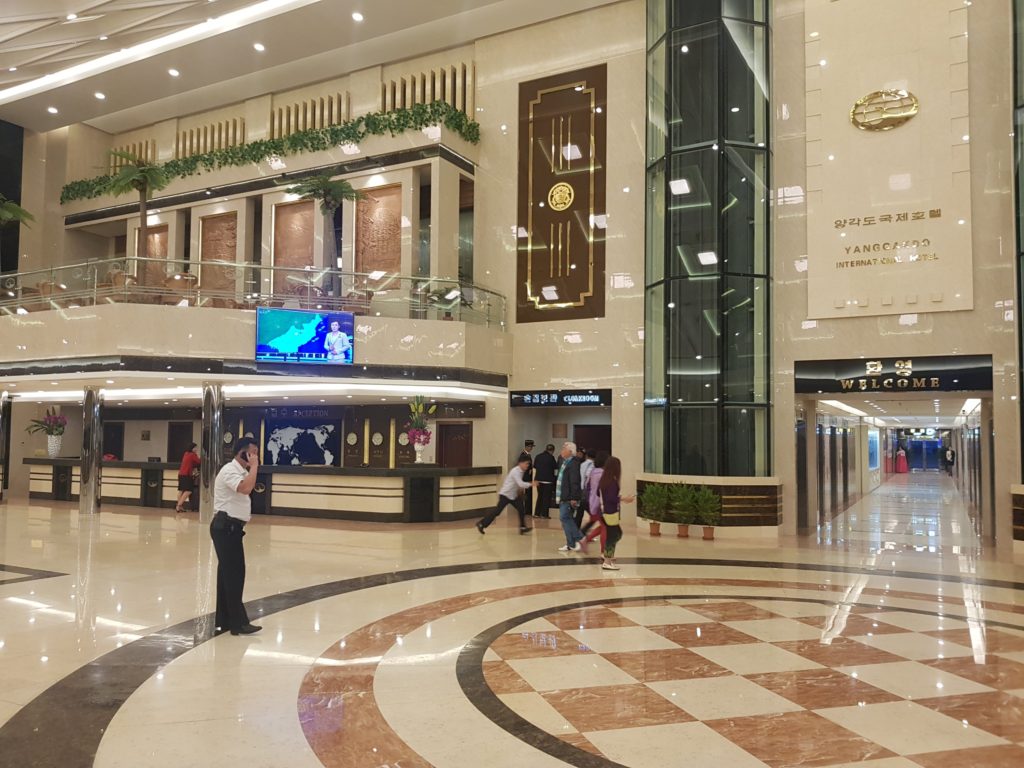
Afterwards we went for a walk around the hotel. We walked along the river Taedong River and continued our conversation with the two guides. Meanwhile Song also talked to us. His English was really bad, but you always understood what he wanted to say. Lee was so uncomfortable that we have Spanish speaking guides that she asked several times if it was really okay for us or if we wanted to change. For us, however, that was out of the question.
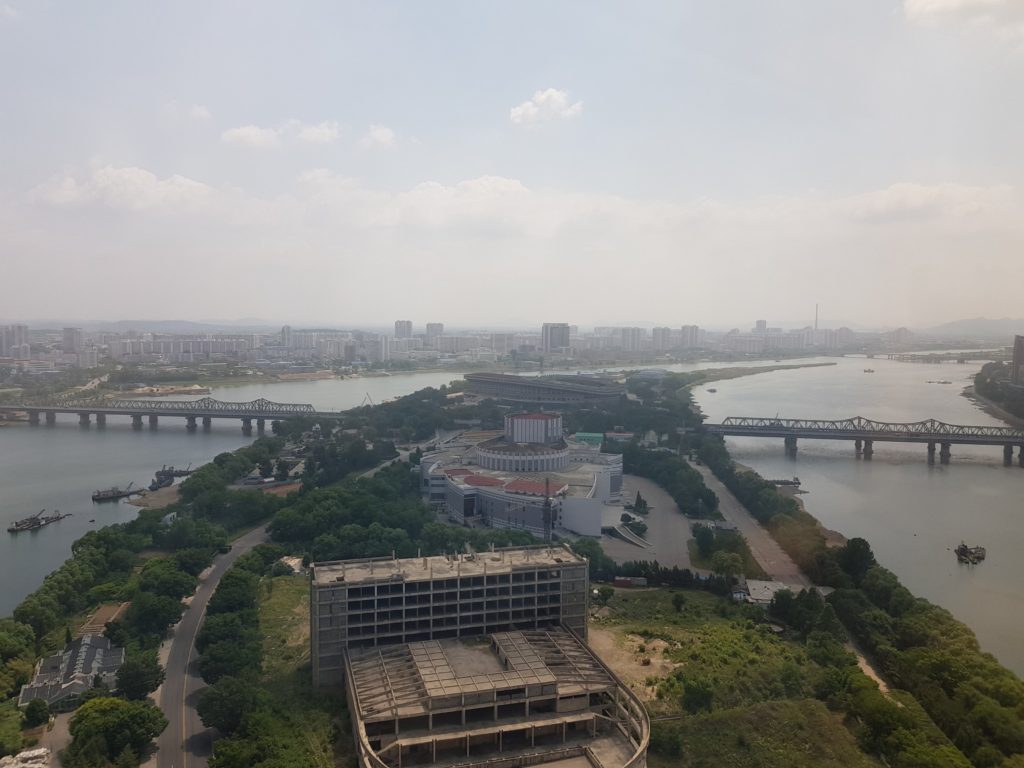
It was already 6 PM and it was time for dinner. The hotel had four different restaurants and we were taken to the European one. We were the only guests in the restaurant, until a group tour of other western tourists entered the room. Lee and Song stayed outside.
I’d like to say something positive about the food, but it tasted like a 12-year-old had cooked for the first time. The spaghetti bolognese was the low point. It was spaghetti on a ketchup sauce (or something like that) and some minced meat in it. It was disgusting. In addition, they served us a kind of Vienna schnitzel. “What meat is this?” I asked. “Fox” said the North Korean waitress. “What’s that?” I asked again. “Fox.”
We met Lee and Song again after dinner for a drink in the hotel lobby. After that, they wished us a good night, but told us several times that we shouldn’t leave the hotel further than 100m. There was no evening program anymore, but it was amazing that we could move freely in the hotel. So it was not like one of my friends told me. Thus, we stopped by the casino of the hotel, which was full of Chinese tourists, and went briefly to the shop of the hotel.
In the shop there were various articles from western countries. Several products of Edeka, the German convenience store, were available. Sausages, chocolate, biscuits… I wondered how all these products made it to North Korea.
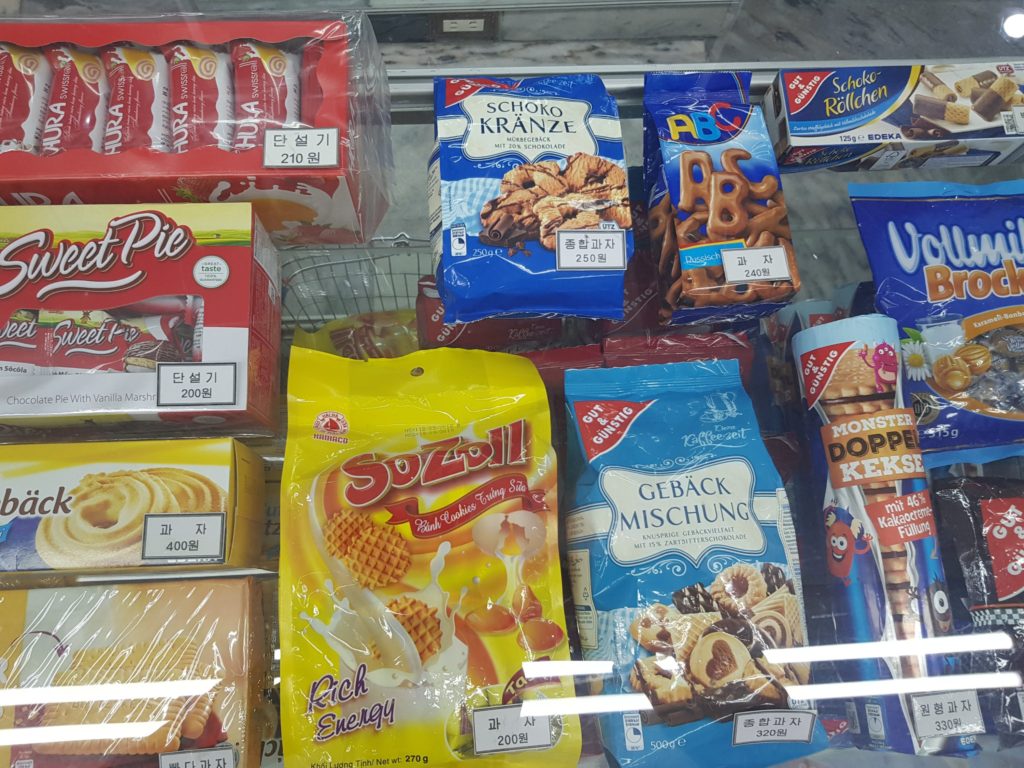
We finished the evening with a game of table tennis. I also bought a tourist guide in the hotel for five euros. It is against the law to bring Guidebooks about South Korea and North Korea from abroad. Now I had a North Korean guidebook. Before going to bed I read some pages. Needless to say that the great leaders are celebrated on many pages and the country is enormously glorified. Already on the second page one reads that North Korea is one of the most important countries in world politics.
Day 2: Sightseeing in Pyongyang
The next day started punctually at 8 AM in the hotel lobby. On this day we should see the main sights of the North Korean capital. Young Pioneer Tours arranged the program for us, but in the end all tourists visit more or less the same sights in Pyongyang.
Our first stop was Kim Il-sung Square, the central square of Pyongyang city and the place where all the action happens. We didn’t drive there directly, but parked our minivan about ten minutes away from the square. While we were walking to the square, I noticed that everyone, but really every North Korean, has a pin on their chest that shows Kim Il-sung and Kim Jong-il. “People do this voluntarily,” Lee said in response to my question. I was not convinced.
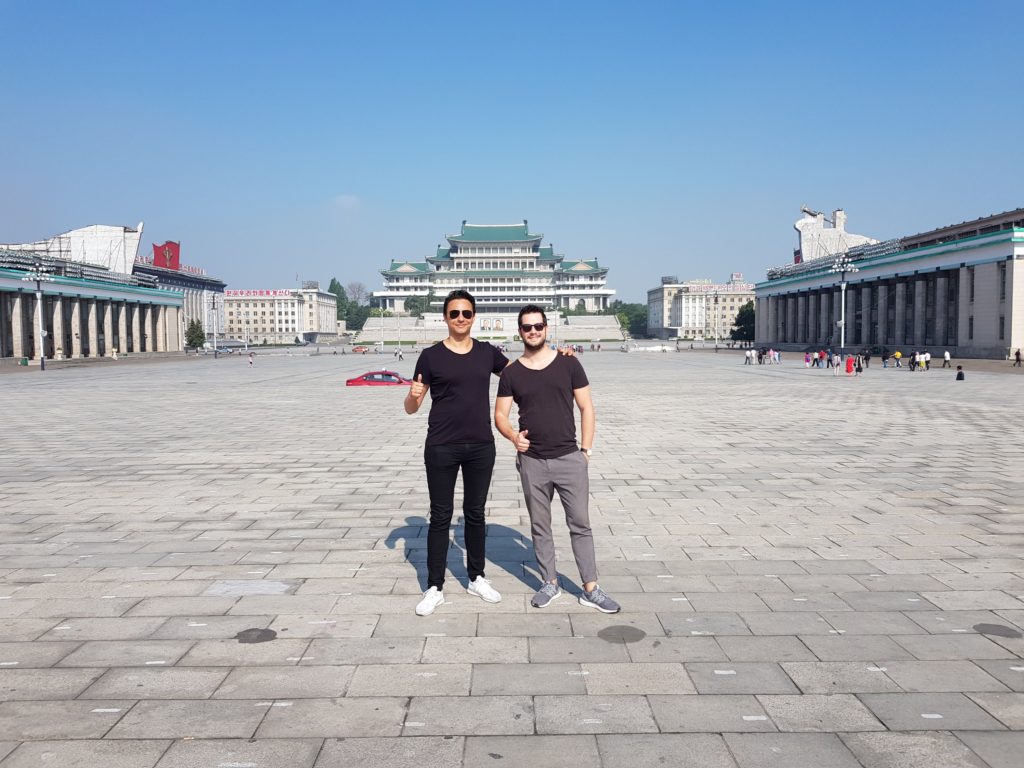
Anyway, Pyongyang didn’t seem as miserable as I had imagined. The streets were full of people and we saw people chatting and laughing. Pyongyang turned out to be a very lively city. We also saw basketball courts or a skate park, where kids were playing and skating. The picture of a completely dull city disappeared already on the first day.
What we saw, however, was that an enormous number of people in the city were sitting on green areas and cleaning up the lawn. Partly with primitive tools, such as a spoon. “The unemployment rate in our country is 0%,” Lee proudly said. The Internet also says that unemployment does not officially exist in North Korea. However, there is a traffic policeman at virtually every traffic light. Or thousands of people sit on grass in the city and cut the grass. We would call it occupational therapy in Europe.
We didn’t see poverty either. But that is not surprising, because the privileged North Koreans live in Pyongyang. Outside the capital the living conditions are much more miserable. Of course, you won’t see that as a tourist. But the British or Australian guide of the Young Pioneer Tour group, which we saw again and again on this trip, confirmed this to us as well.
While we were walking through Pyongyang, most North Koreans avoided eye contact with us. Or when our eyes met, the locals immediately looked away. I noticed, however, that some little children whispered about us with their parents or pointed at us. As already mentioned, only about 5-6% of the tourists in North Korea are from the western world, so that the North Koreans do not see people from our latitudes every day.
Another thing I noticed was that not a single woman wore makeup in North Korea. I didn’t see any nail polish, lipstick or anything else. In rare cases the women had eye shadow or something similar. Probably such products do not come into the country because of the international sanctions.
We moved on to the next attraction. The Mansudae Grand Monument is without a doubt the most weird sight in Pyongyang. There you can admire two 20-meter high bronze statues of Kim Il-sung and Kim Jong-il. The whole thing becomes weird because all visitors have to bow to these statues. If you refuse, you can’t go there. And so as a tourist you stand in a row in front of the statues and bow. During this trip, there were more statues of the two great leaders, where the tour guides bowed. “To show respect” Lee said.
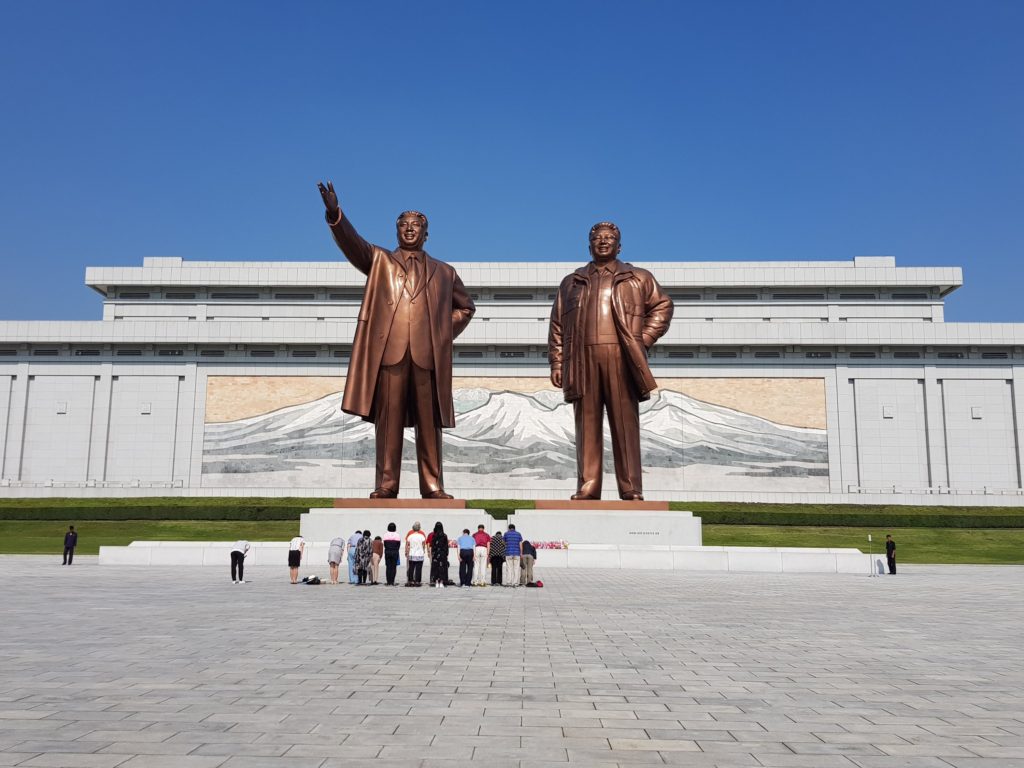
Lee and Song always talked about the “great leaders”. “Our great leader did this, our great leader did that…” They also don’t use the names of the three great leaders without adding a title. For example, they always speak of President Kim Il-sung, Chairman Kim Jong-il or Supreme Leader Kim Jong-un. It looked like a cult to some extent. The two former leaders and the current leader have God status in the country. People wear their faces on their chest and bow when they pass a statue.
The God status of the leaders also becomes visible when you go to bookstores or souvenir shops. And you do this several times a day when traveling in North Korea, as the goal is that the tourists spend as much money as possible. In an international book shop, there were lots of books not only about the three leaders, but also written by the leaders. And this in dozens of languages. Additionally, one finds all kinds of propaganda posters, postcards, flags and shirts with the national flag in these shops.
The day was a mixture of sightseeing and fun. We visited normal sights like the Juche Tower or the Monument of Party Foundation as well as a bowling alley, a water park and a beer bar. The most important thing was that we had a lot of fun with our nice guides. We laughed a lot, made jokes and shared stories of our lives with each other.
For example, Song told us that he was in Cuba at the age of 18 and later in Equatorial Guinea. Obviously Song belongs to the “privileged” people who could leave North Korea from time to time. But it’s not always fun. While he was studying in Cuba, he was sent to Equatorial Guinea as a construction worker.
An important source of income for North Korea is sending locals abroad as construction workers. The wages go directly to the North Korean government itself. Needless to say, the North Korean “slaves” are mainly sent to countries whose governments do not take human rights very seriously. For example Russia or various countries in Africa.
Although Song was one of the few North Koreans who could see three other countries (he was also in China), he found it nowhere as beautiful as in North Korea. In poor Cuba he only got a piece of bread and a glass of water for breakfast, he told us. And in Equatorial Guinea he was bothered by the locals “who had only money, sex and food in their mind”.
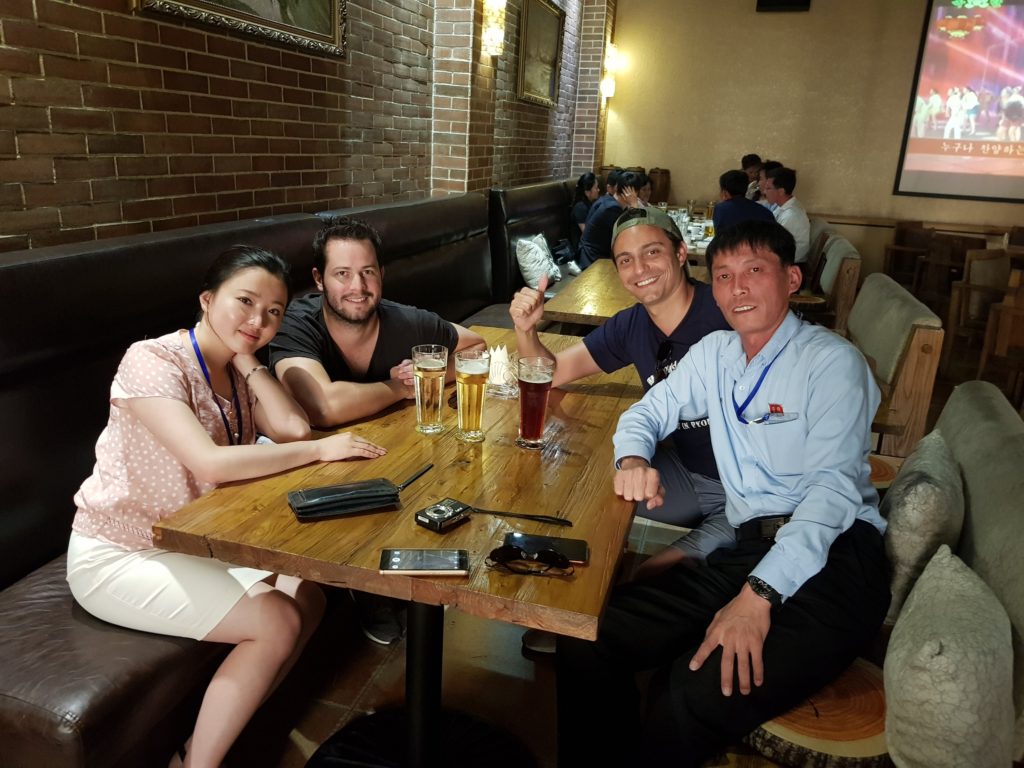
All in all, we were in the city for almost twelve hours on this first day. It was a very interesting day. Pyongyang surprised us because the city definitely did not match the picture that we had before this trip.
Day 3: Propaganda and roller coasters
On the third day there was one activity I was looking forward to the most: Riding the subway. I wasn’t sure whether we would be together with the locals or in a separate wagon. My friend, who has been in North Korea, told me that they had to go in a separate wagon so that they couldn’t get in touch with the North Koreans. I thought that they might do an exception, because we were only two tourists and not a bigger group.
First, we entered the station, where they allowed us to take pictures and videos. By then at the latest, I knew that the reports that claim you cannot film or photograph most places in North Korea were bullshit. There was a lot of traffic in the subway station. Many North Koreans use it to get from one end of town to the other. The station itself was quite pompous. Maybe not as pompous as in Moscow, but very nice to look at.
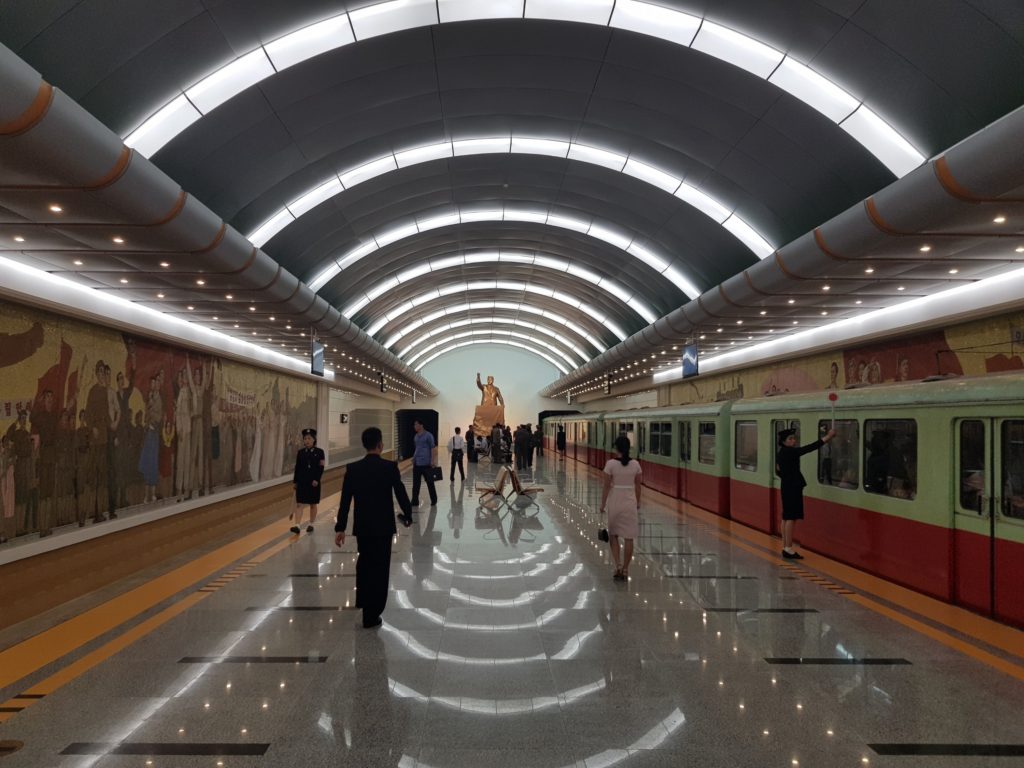
I asked myself if the story of my friend saying that you have to ride the subway in separate wagons was also untrue? When Song said that we should go to the front wagon, I said that I would rather go with the middle wagon because “the front wagon goes too fast and the back wagon goes too slow”. This completely absurd logic seemed to be too much for Song, so that we finally got into the middle car.
The ride was fun. There was a North Korean school class in our car. I assumed that as a tourist you are not allowed to interact with the North Koreans. But since we got along well with Lee and Song, I wanted to test whether something would happen if I did it anyway. I waved to the school class, the children waved back laughingly. Neither Lee nor Song reacted negatively by trying to stop me or something like that.
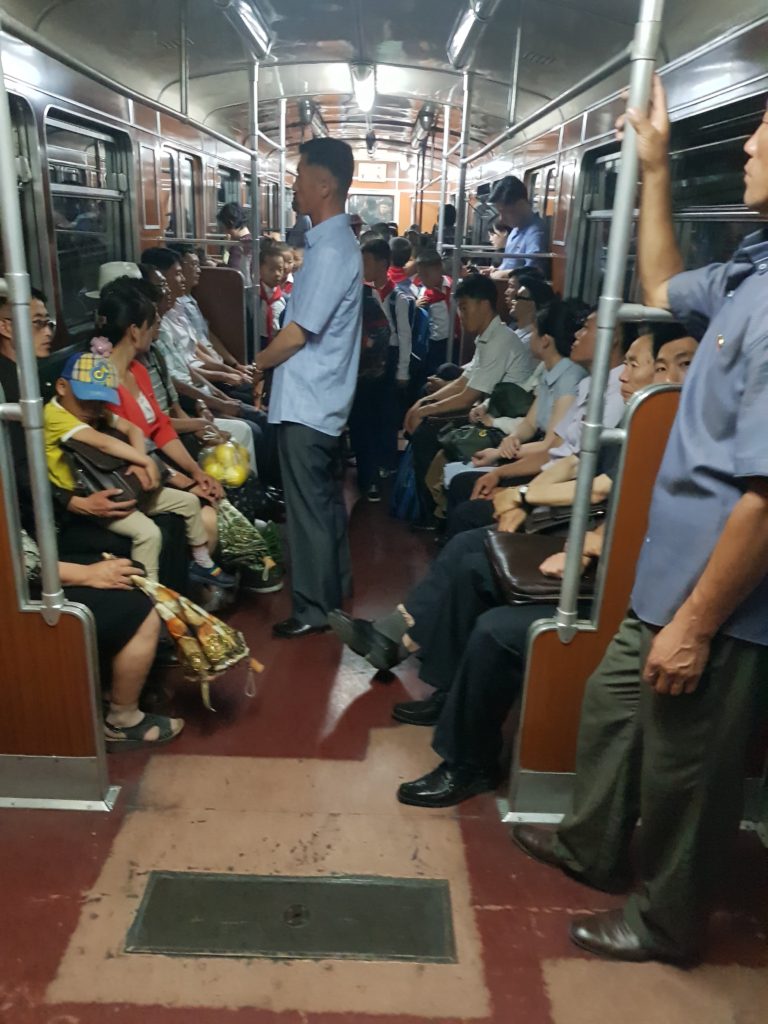
I realized during the whole trip that it’s not forbidden to interact with the North Koreans. That’s another misconception about traveling in North Korea. Whether the North Koreans will react is another matter. Contact with foreigners is ultimately a risk for them. However, most of them reacted when we waved to them. Some kids in the water park even got a high-five from me.
The second day was also a mixture of sightseeing and fun stuff. For example we went to a shooting range and shot some bullets. Great Leader Kim Jong-un was apparently also there someday and on the wall hung his targets with the bullet holes. On both targets the point in the middle was hit – what a surprise.
Afterwards we drove to a shopping center where we could change yuan or euro to North Korean won. It’s the only way to get local currency during a trip to North Korea. However, you have to change the rest of the money back later, because it is forbidden to take any local currency out of the country.
The shopping center was nothing special. The only interesting thing was to see that international brands like Haribo, Carlsberg or Nestle were also present on the shelves. In the lower floor there were all kinds of food. On the upper floor were electronic devices, clothes and furniture. The shopping center was one of the rare moments when we could walk around alone. Song sneaked through the corridors, too, but partly let us go, so we weren’t under observation anymore (probably we were anyway, but at least they didn’t give us the feeling).
Another sight that the North Koreans like to show tourists is the War Museum. There a female soldier proudly showed us weapons, helicopters and other war material that North Korea conquered from their opponents during the Korean War.
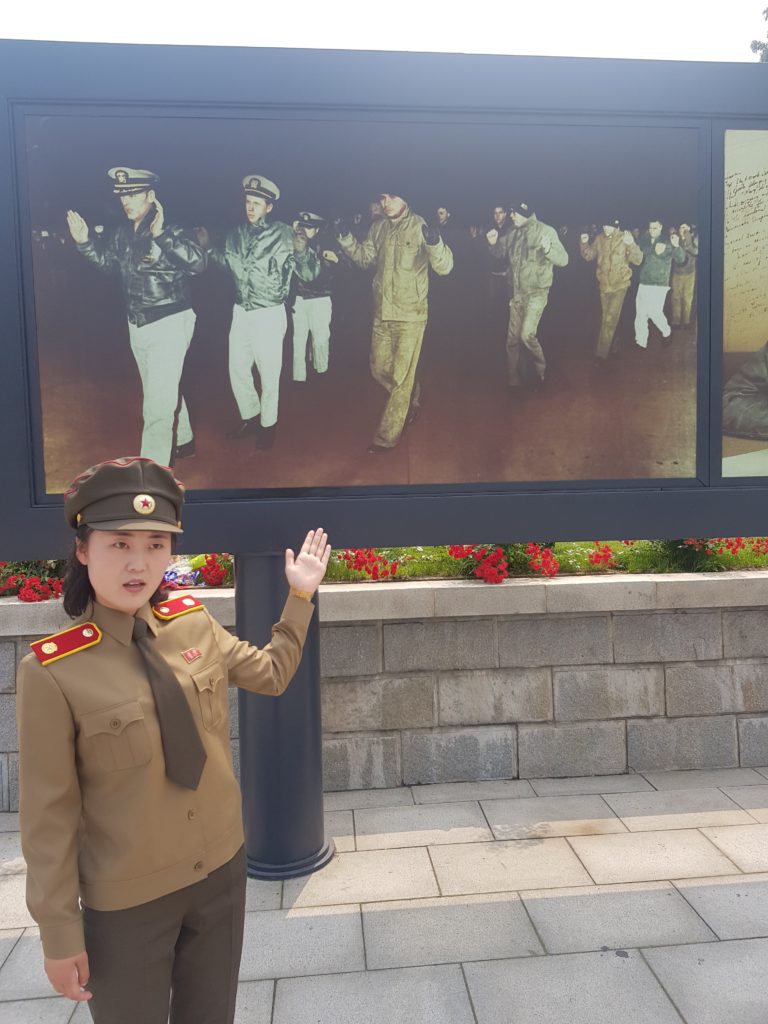
They are especially proud of the USS Pueblo, the only US Naval Ship still held captive by another nation. Inside the ship, the soldier showed us some confessions and surrenders from Americans who were in the ship at that time. According to reports, the North Koreans don’t take it too seriously at the exhibition and have worked on the ship a little later to make it look more dramatic.
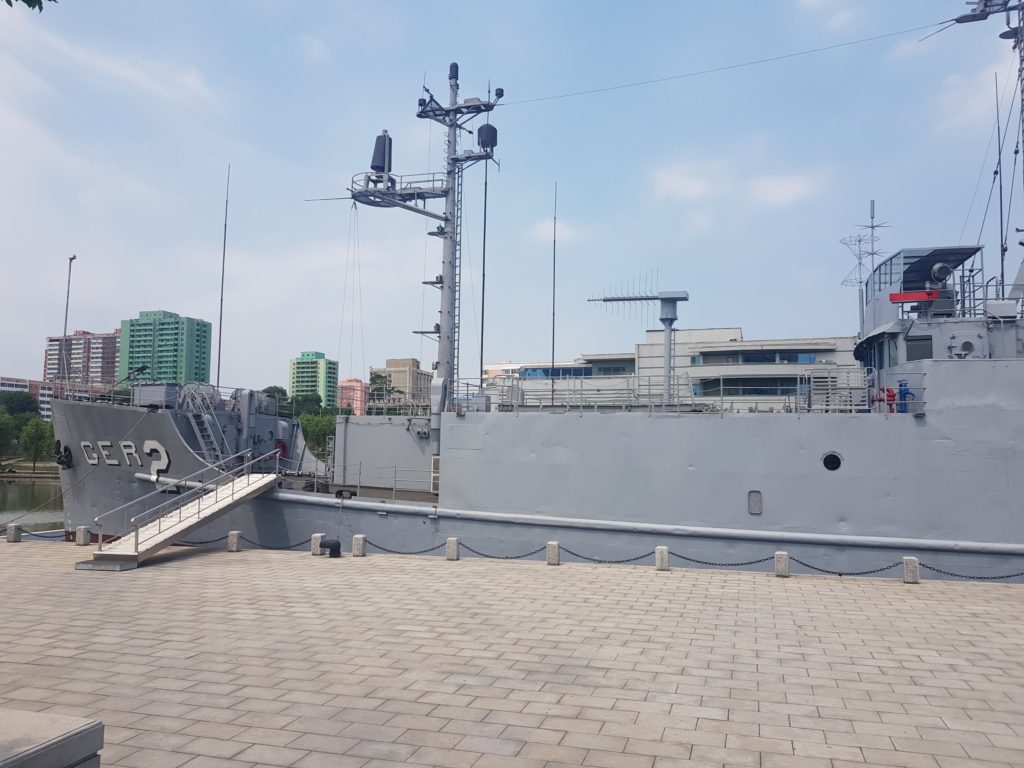
The almost two hours we spent in the war museum were a first-class propaganda tour. The soldier who was responsible for us never missed an opportunity to swear about the imperialist Americans. However, this museum is still quite harmless. There is another one in North Korea with much more drastic pictures. The visitors are told stories about how the Americans played football with North Korean babies during the war.
The last thing we visited on this day was an entertainment park. There were some cool roller coasters in it and poor Song always had to join us, although he was quite scared. Kim Jong-un built this park a few years ago, because entertainment parks are usually associated with wealth.
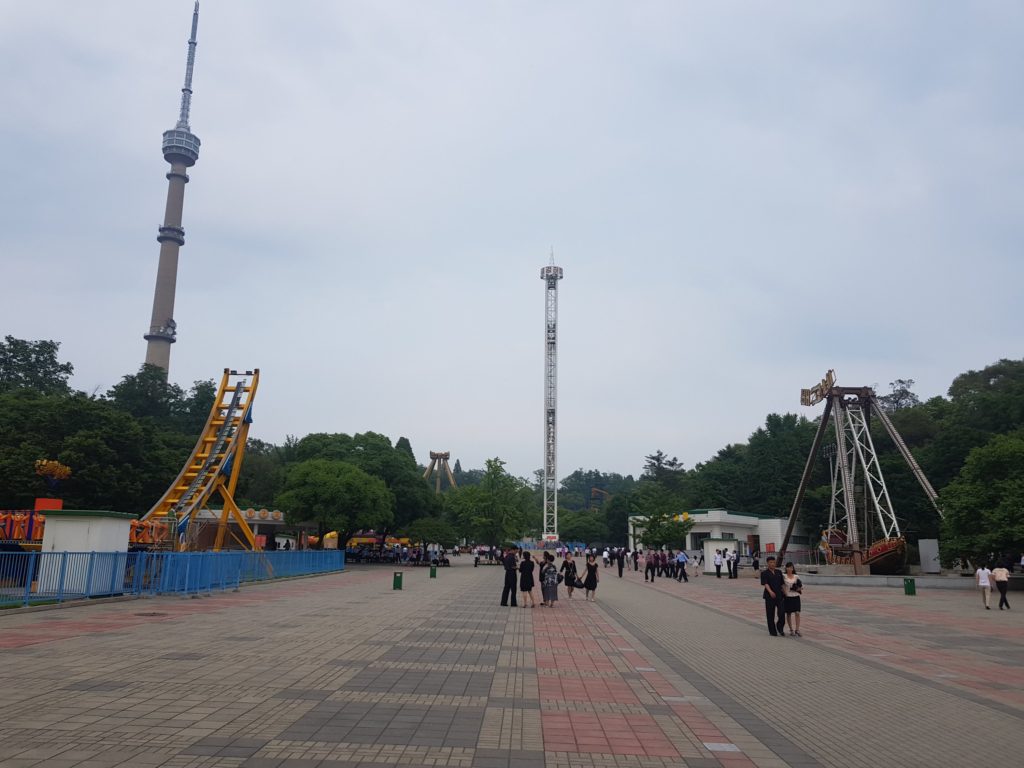
While Song and Matt were on the free-fall tower, I asked Lee the question I wanted to ask since I arrived in North Korea… “Did you know that Great Leader Kim Jong-un spent some years of his childhood in Switzerland?” Lee looked at me in a shy way and said: “A tourist told me that.” I was baffled as I didn’t expect an answer like that. And I don’t know if she had answered this question like that in Song’s presence. Lee wanted to know more and asked me about the school Kim Jong-un visited, and I told her all the facts that I know.
Interestingly, Matt confronted Song with the same story the day after, while Lee and I weren’t around. “MY president? No, no, no. Never in Switzerland. Always here in Korea. Never abroad.” That’s the normal answer the Korean guides give you. They either don’t know better or they just refuse the fact,
Day 4: The Demilitarized Zone
On the last day in North Korea we left Pyongyang towards the border to South Korea. By car it was about two hours drive to the border. On the way Lee asked me if she could hear some of my music, so I gave her my cell phone and turned on Spotify. For an hour she listened to my playlist. Fortunately, I had neither “Gangnam Style” nor “Born in the U.S.A.” on it.
We had visited the Demilitarized Zone, the border between the two Koreas, one week before from South Korea. And now that I have done the tour from both sides, I have to say that the tour from South Korea was much better. It was cooler, more interesting and also more tense compared to the North Korean tour. I would have expected it the other way around, but the tour in North Korea was like a fun trip.
During the tour we laughed, joked and took pictures with North Korean soldiers. Apart from the war museum, this is the only place where you can take pictures of them. If you had not known it better, you would not have known that you were at the best secured border and one of the most tense places in the world.
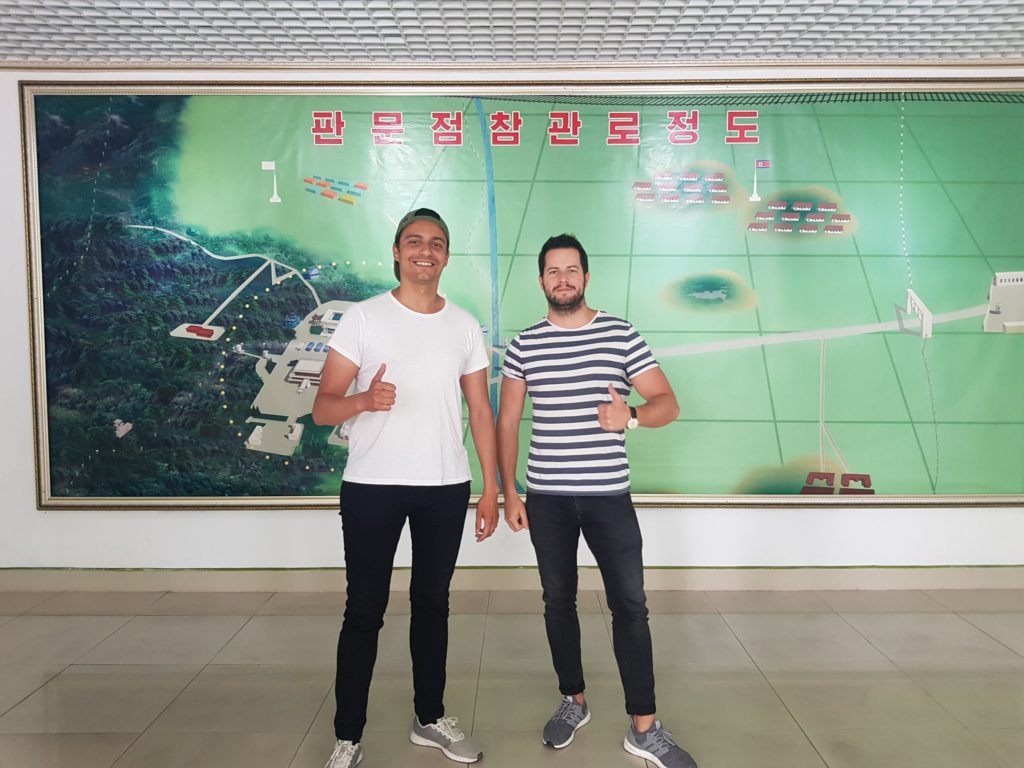
It was still interesting to see both sides of the border. Unfortunately, the North Korean tour only visits a few houses in the Joint Security Area, where representatives of both countries met for negotiations. The South Korean tour is more versatile in this respect, as one can still look to North Korean territory with telescopes and visit a tunnel that the North Koreans have built towards the south. In contrast to the tour from the south, we did not see any tourists on the other side by the way.
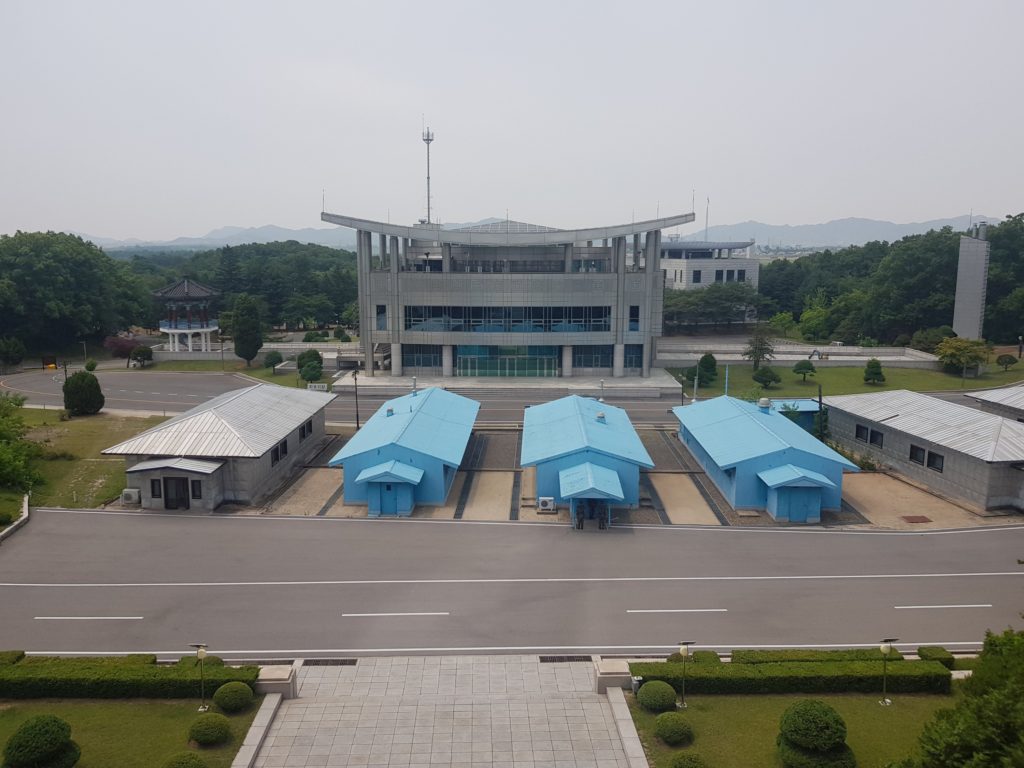
After 1-2 hours the tour was over again. Funny was that at the border you have access to the South Korean telephone network and thus also to mobile internet. Therefore, after three days of isolation, we could again give a sign of life towards home.
Apart from the day of arrival, this fourth day was the least interesting in North Korea. We visited the Koryo Museum in Kaesong and the local folk costum park in Sariwon, but that was nothing I will remember for decades.
The highlight should then be dinner in a BBQ duck restaurant. That was also urgently necessary, because from a culinary point of view we had three hard days behind us. We always got lots of food in North Korea, but it rarely tasted good and it was more or less the same every time: rice, kimchi, pickled vegetables and so on. And mostly the food was either bland or extremely spicy.
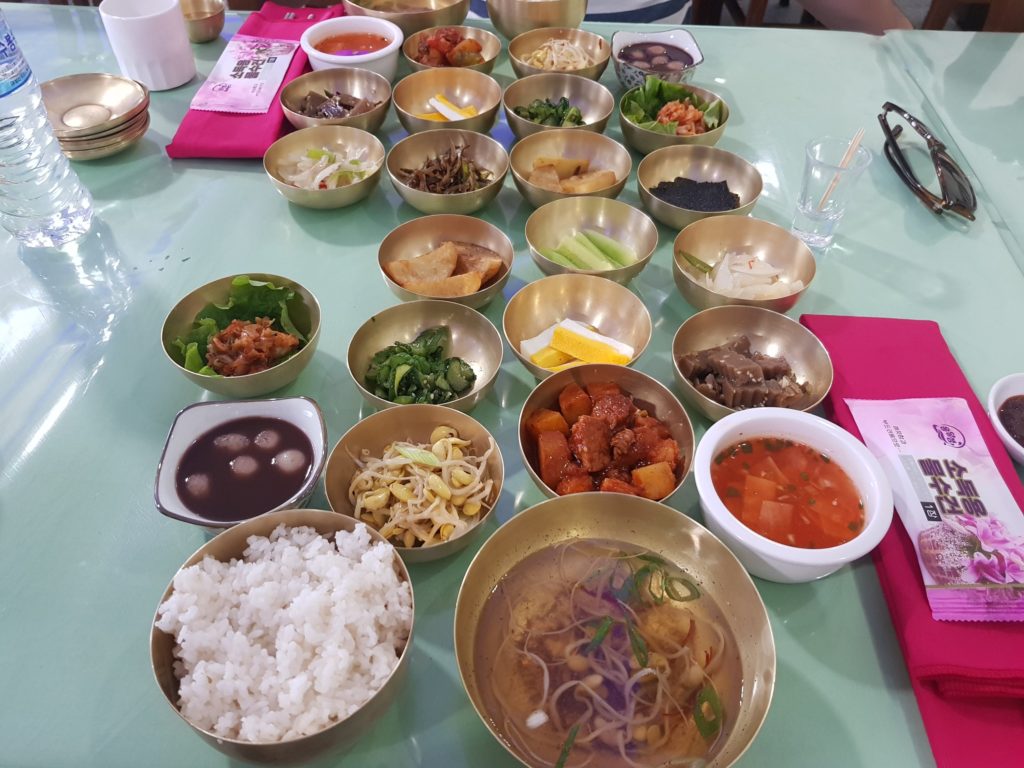
At the final dinner there was, as the name of the restaurant suggests, duck on a table grill. And again a lot of it. While Matt was thrilled, I thought it was better than the food on the other days, but still not especially tasty. Just because of the food I was happy that the North Korea trip was coming to an end. The lifesavers were all the cookies and chocolate from the hotel shop. Without this stuff it would have been really hard. North Korea was not the worst country in terms of food among the 88 countries I have visited. But it would be among the worst five.
A walk through a newly built residential area for scientists (nuclear physicists?) was our last activity on that day. We were going to travel back to Beijing the next day early in the morning. A very special trip in a very special country came to an end.
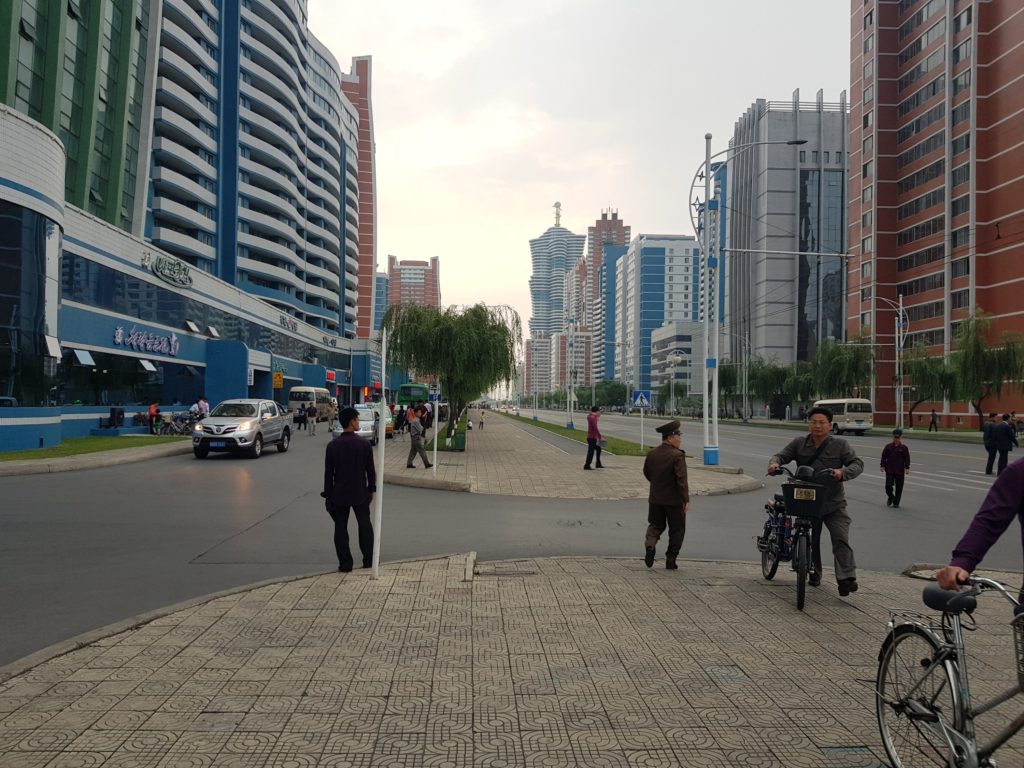
By the way, also the departure proved to be quite uncomplicated. The luggage was not searched. Fortunately, because there were some notes of the local currency in one of my trouser pockets for my banknote collection.
North Korea – is it worth it?
North Korea is a country like no other. Seriously, there is no country in the world that is only a little like the Democratic People’s Republic of Korea. Even Turkmenistan, which is also weird, is far from the same. Traveling to North Korea does not have much in common with a normal trip anyway. It is rather a unique experience that you won’t find anywhere else in the world.
The question of whether a trip to North Korea is worthwhile cannot therefore be answered definitively. It depends too much on what kind of person the traveler is. For me personally, North Korea was definitely worth it. And I think those who are interested in North Korea, its history, its politics or world politics in general have a very interesting travel destination in North Korea.
Before this trip I thought that the travel report about North Korea would be the easiest one I would ever write. Instead, it became one of the most difficult. Because the biggest story about my North Korea trip is that there is actually no big story. North Korea wasn’t the dull place I was expecting. The guides weren’t as strict as I thought. Of course you are limited, but in the end a lot of information is wrong, e.g. that you can’t photograph almost anything, can’t leave your hotel room or can’t talk to the locals.
Neither was there a single moment when I thought something was being staged in front of us. Instead, we saw the North Koreans in their everyday lives: riding the subway, taking a stroll or playing basketball. Maybe we as a group of two weren’t worth the effort of a staging. I would only find out if I took part in a group tour someday.
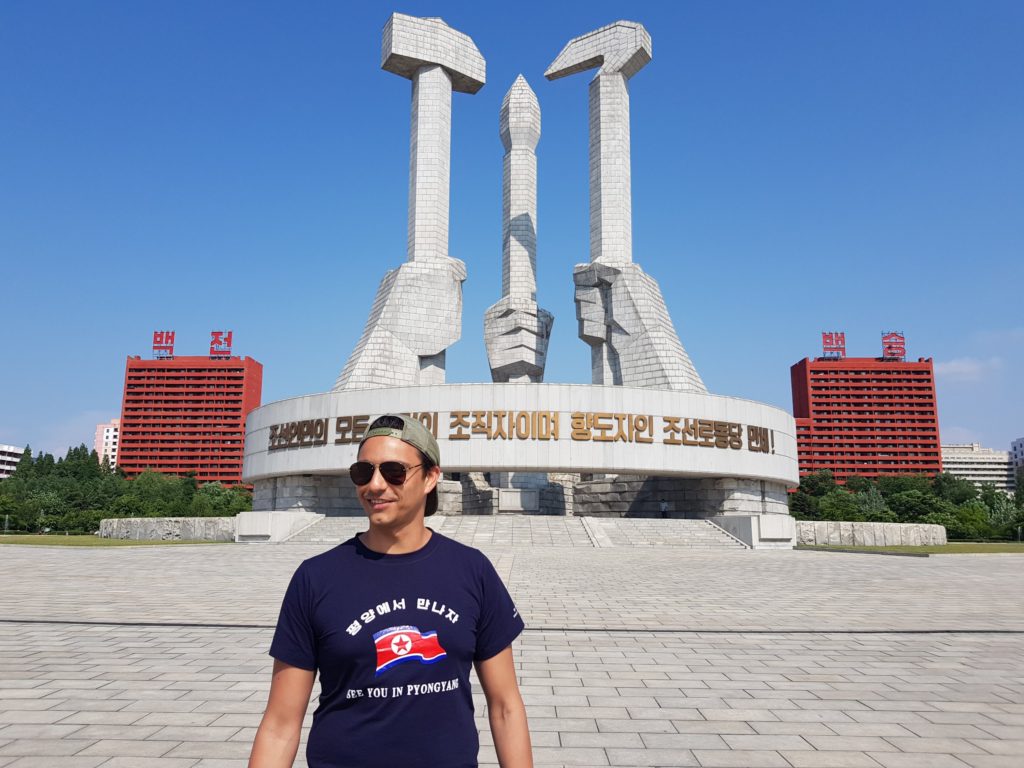
After the trip I watched again the documentation to which I referred at the beginning of this article. And now I have to say that this documentary is nothing but fake news! The documentation often shows a “hidden camera” logo on the screen. For example in the hotel (it was the same hotel as ours) or at the Mansuade Grand Monument. We were able to film at both locations without any problems.
Furthermore, the documentary says things that are simply not true. For example, you can buy flowers in front of the Mansuade Grand Monument and place them in front of the statues. The documentary says that this is obligatory for tourists. This is simply not true. It is appreciated by the tour guides when you do it, but it is voluntary.
However, it makes the documentary a better story. And this is exactly the point. I believe that most travelers realize that North Korea wasn’t the place they had imagined. Since their trip doesn’t offer the crazy story they had expected, they add some craziness by changing some details. That doesn’t make it true though.
I am neither naive nor ignorant and know that North Korea is mercilessly oppressing its citizens. The evidence of all the human rights violations in the country is overwhelming. Therefore, I do not want my words to give the impression that I am questioning the whole picture of North Korea. I continue to believe that North Korea is the worst country on earth in its dealings with its citizens.
However, I would like to say that a trip there will surprise many. Most of them will probably leave the country with more questions than they had before. After all, there is only one final thing to say: it’s better to have seen North Korea once than to have heard about it a thousand times. Only this way you can get your own picture.
Find the travel reports of the other countries I’ve visited here!
